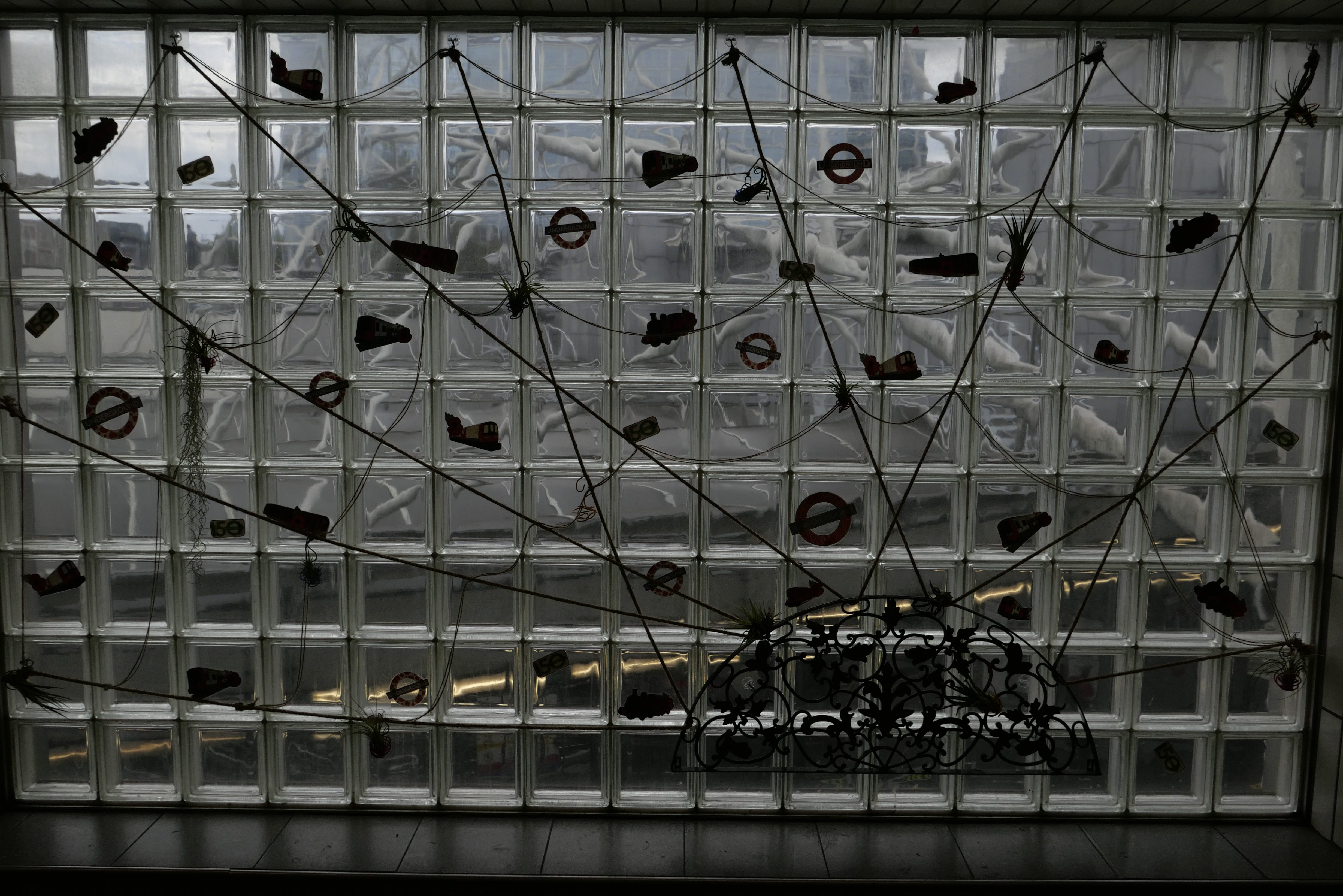
Those of you who have known me for quite a while would know that I have quite a serious obsession for trains or public transport as whole. This is why I have spent quite a while travelling around in London by trains.
It is undeniable that Hong Kong has one of the best public transport systems across the globe, with excellent overall quality and reliability; and having been in London for a few months, I definitely can see why people always say Hong Kongers should be thankful for having such a reliable system. It is evident that London’s system is way more unreliable and inefficient than Hong Kong’s, and that passengers don’t get access to fancy things that Hong Kongers take for granted, like air-conditioning or network-wide cellular network. But we often have to remind ourselves that London’s system is, simply put, old. Whatever “old” means to you, “oldness” conveys heritage and culture.
The following is a collection of random photos I have taken of London’s tubes and trains on my camera and phone. Note that they are not displayed in time-chronological order.
I would like to start my article with a thought of the day displayed at Hammersmith (D&P) Station.
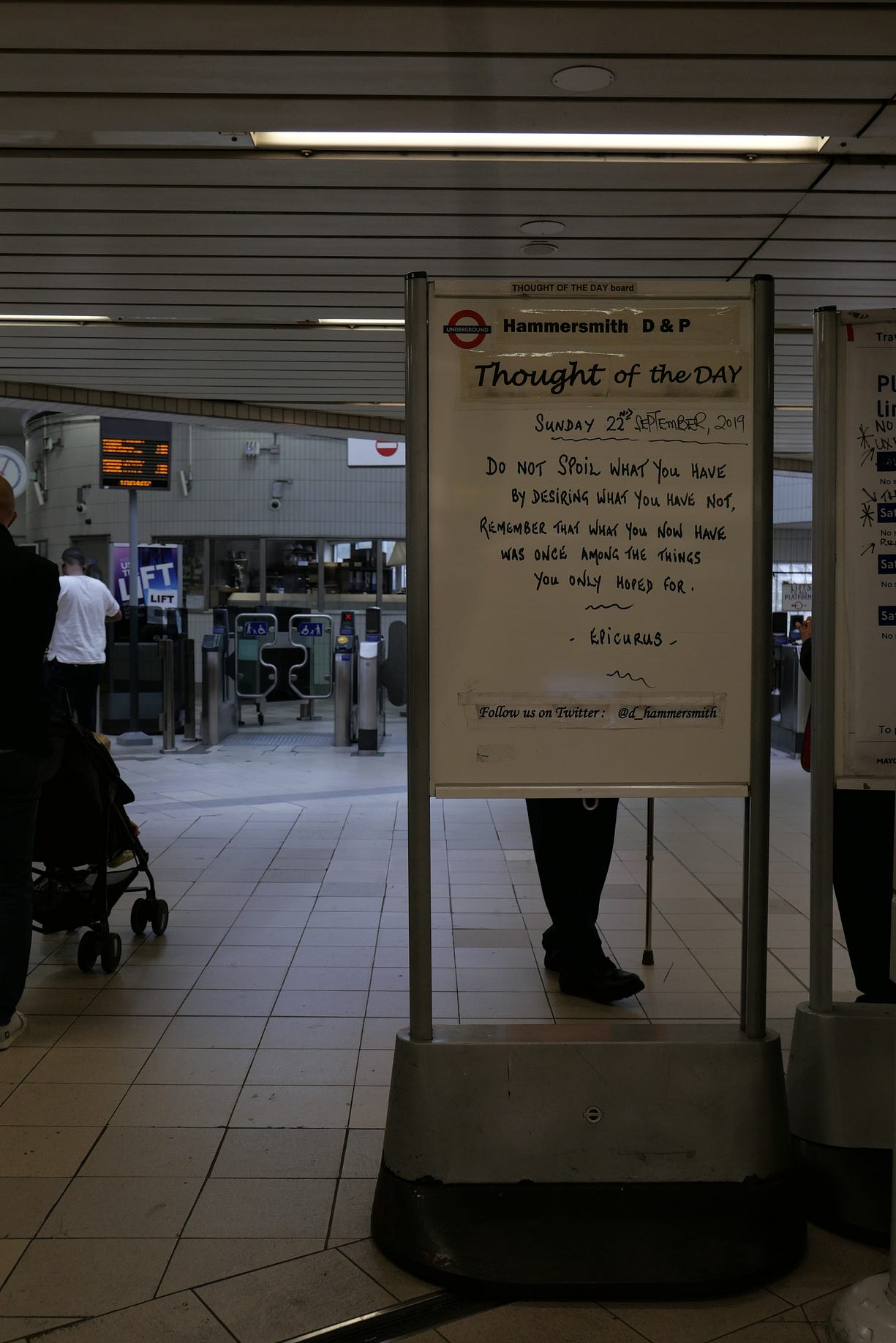
London Underground Deep Tube Lines
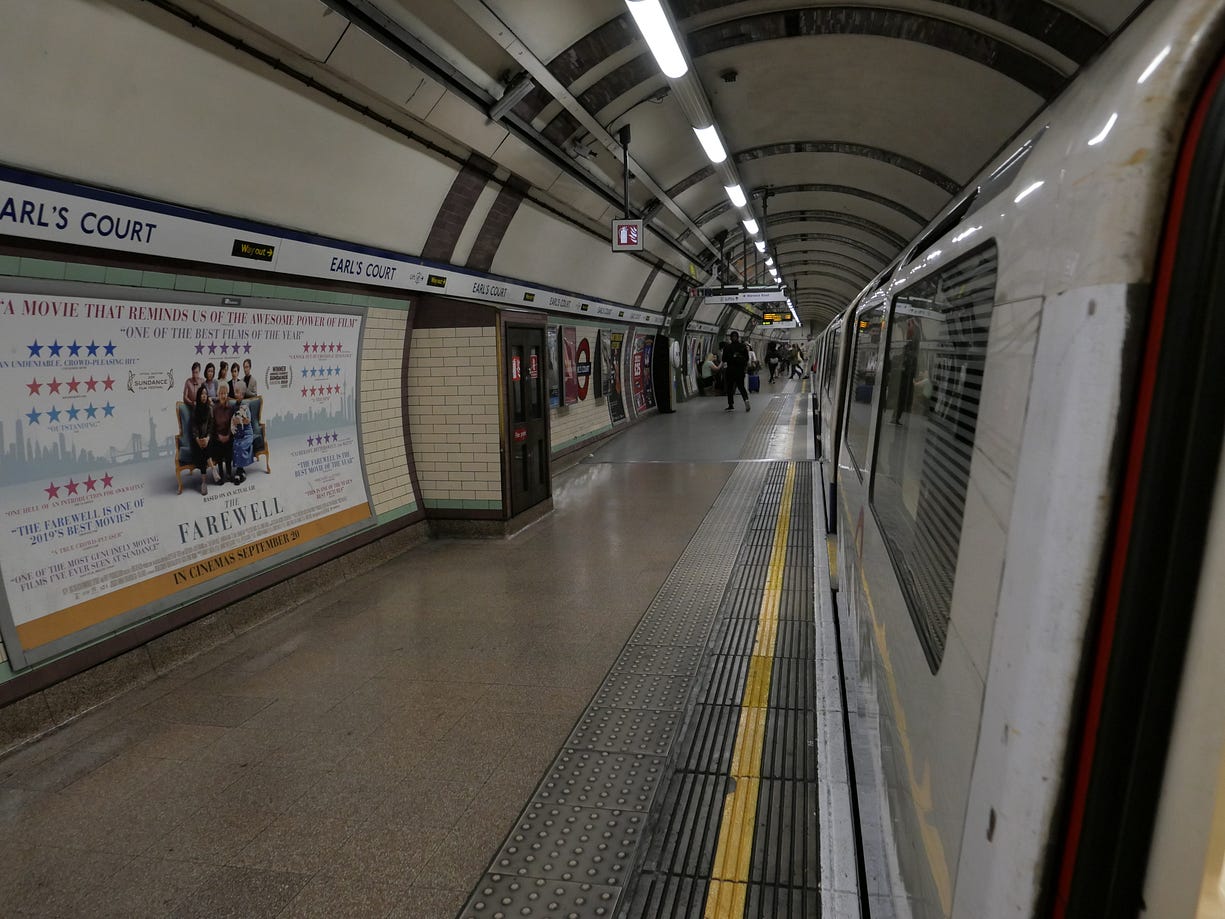
Northern Line
The Northern Line is the first tube line I have taken in London. The photo below is a southbound train departing from Mill Hill East, arriving at Finchley Central. Most southbound trains arriving at this station are actually from High Barnet, which means that this is actually a decently rare sight.
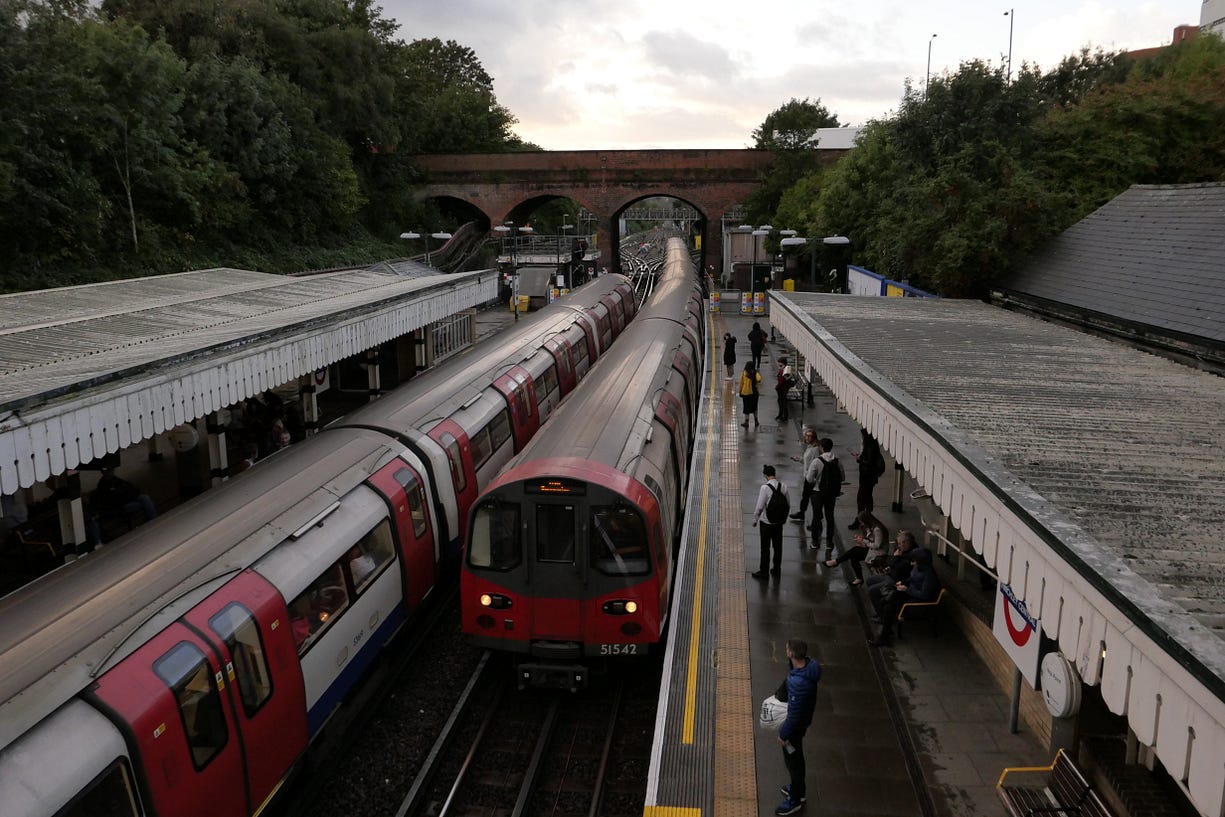
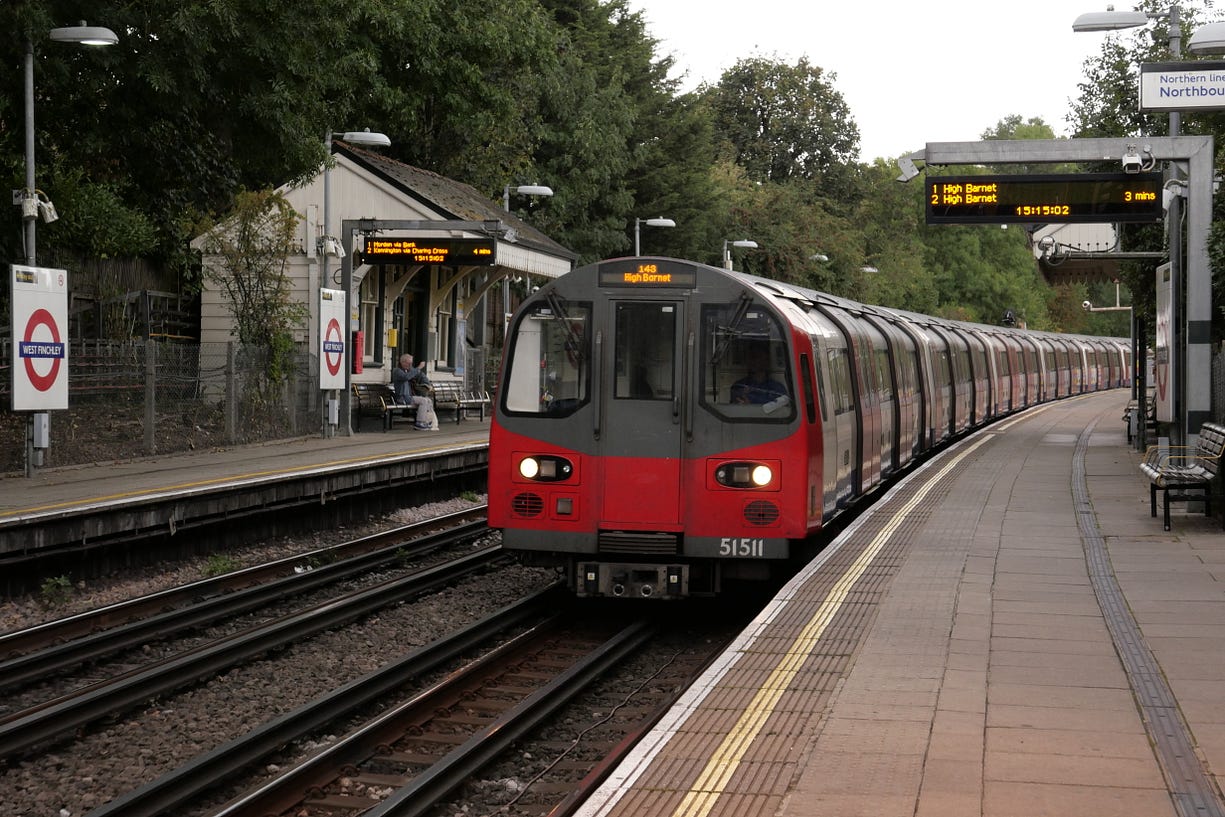
These trains are manufactured by Alstom.
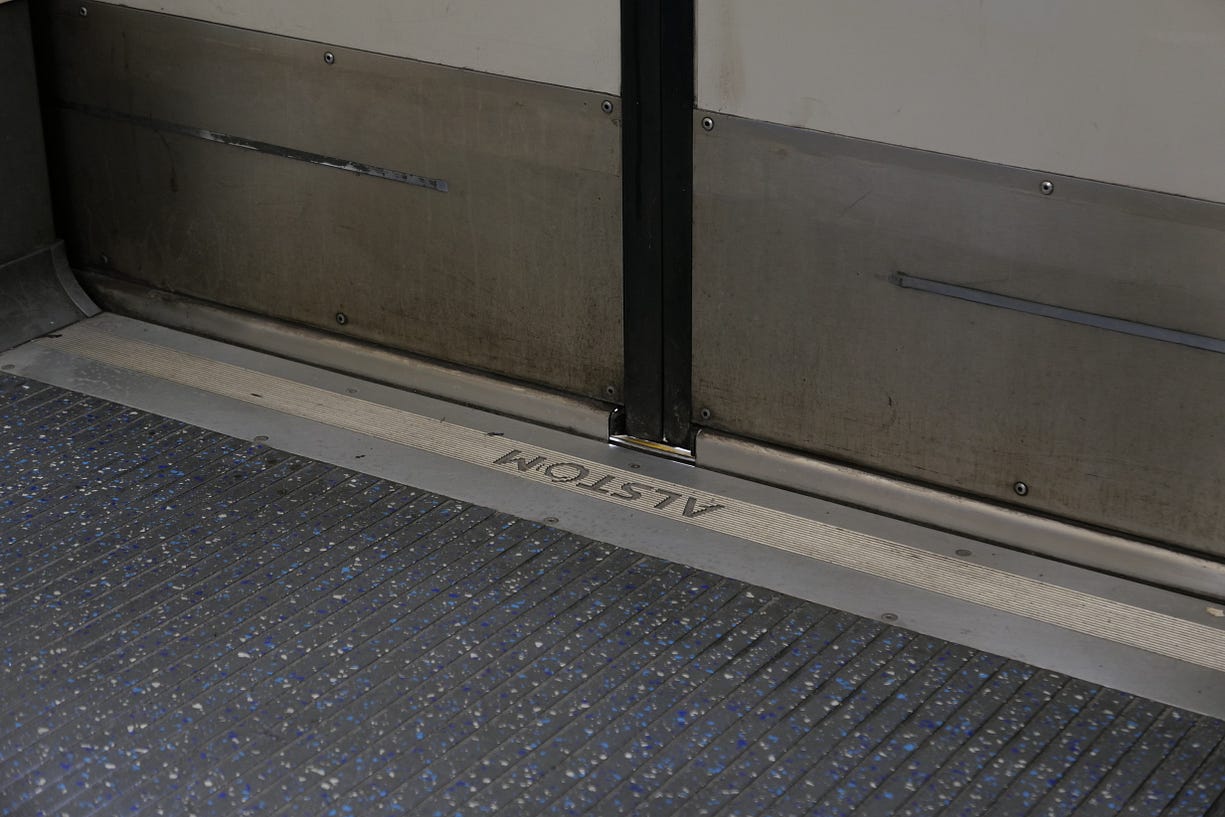
In the eyes of a Londoner, a station like Russell Square may be absolutely ordinary, but to the eyes of a new-comer, the tiles on the walls on the platform are certainly elegant and gorgeous.
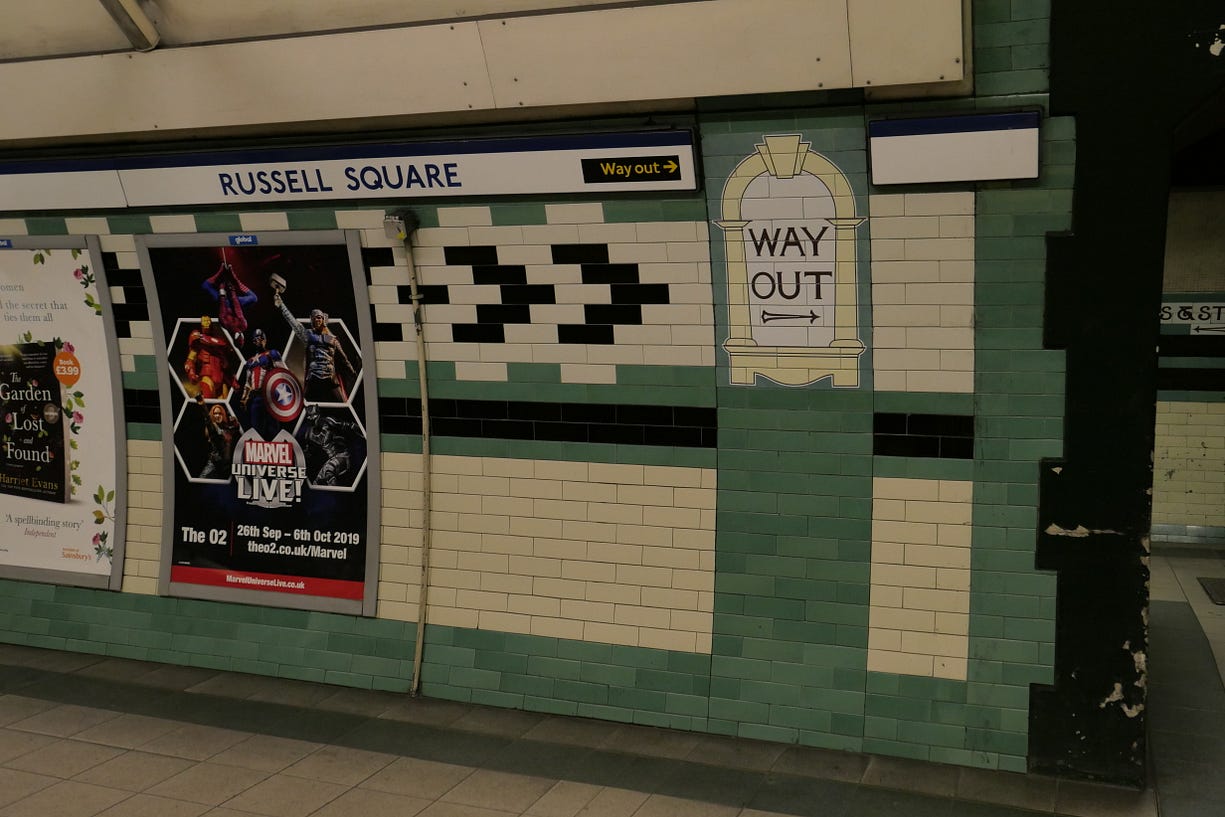
The northern line is quite a complicated line indeed. It has so many branches, which really makes it necessary to have information screens like this. In fact, it was formed from two railway companies, the City and South London Railway and the Charing Cross, Euston and Hampstead Railway.
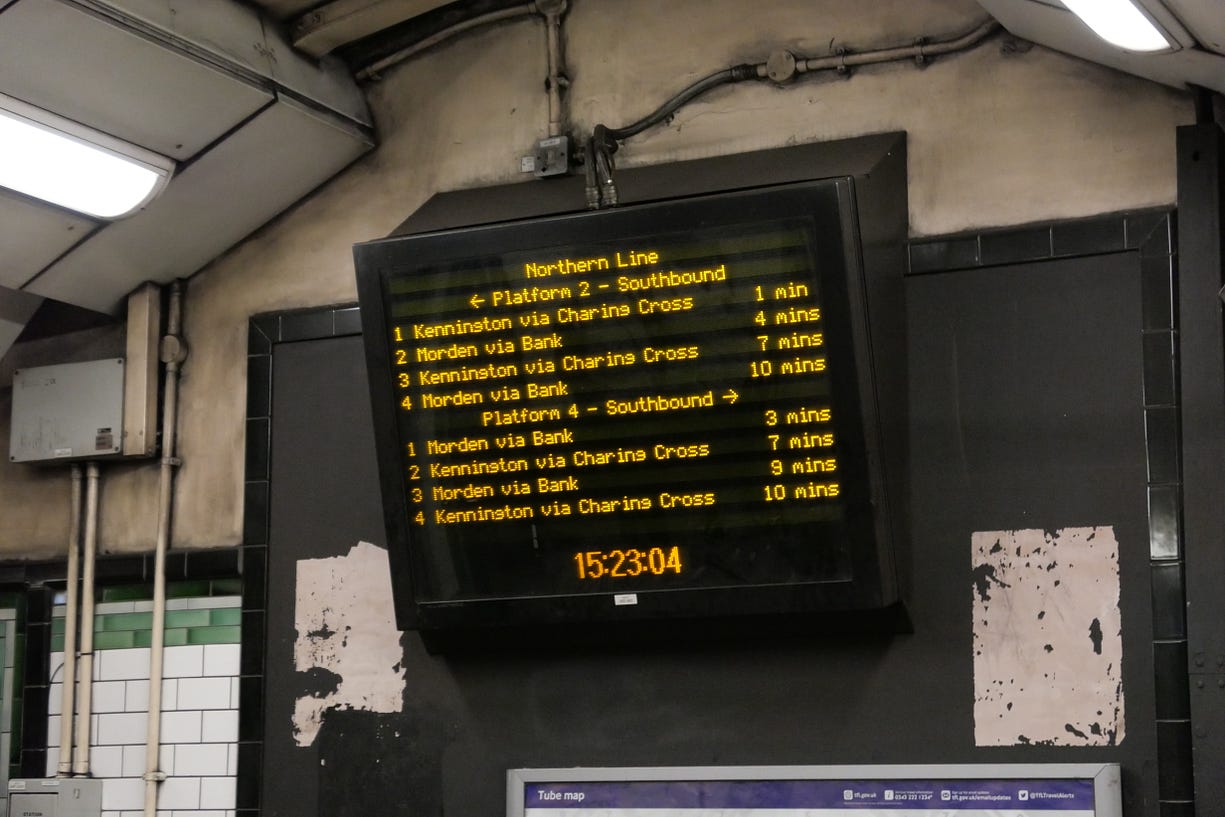
And I guess things are going to get a bit more complicated with the new Battersea Power Station Branch opening (hopefully) in 2022!
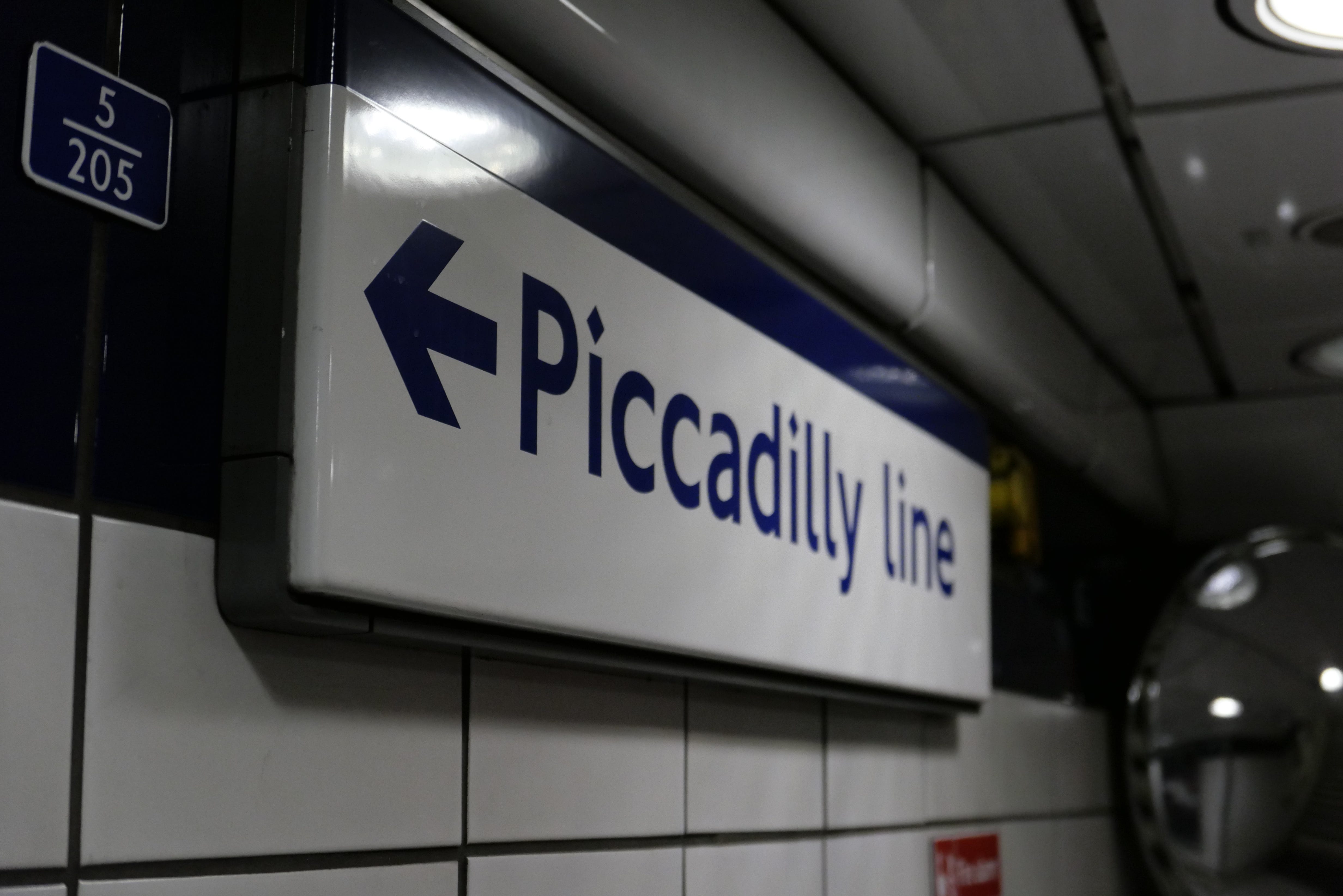
Piccadilly Line
The Piccadilly Line is run on the London Underground 1973 stock, which is the second-oldest tube stock on the network. The trains are quite old, and they are going to be upgraded in 2023, so hopefully this means more comfortable tube journeys between Central London and the Airport.
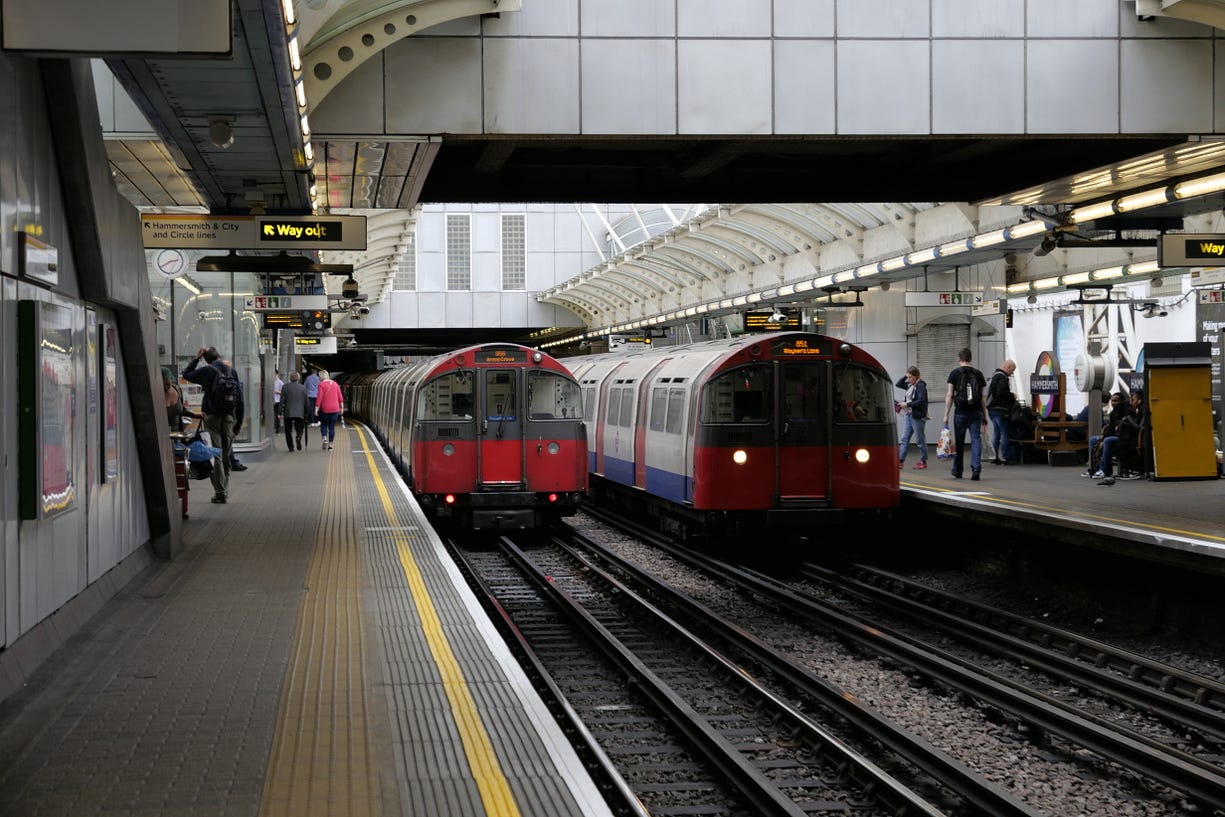
Here’s my lousy attempt at trying to take a motion blur photo of a departing Piccadilly line train.
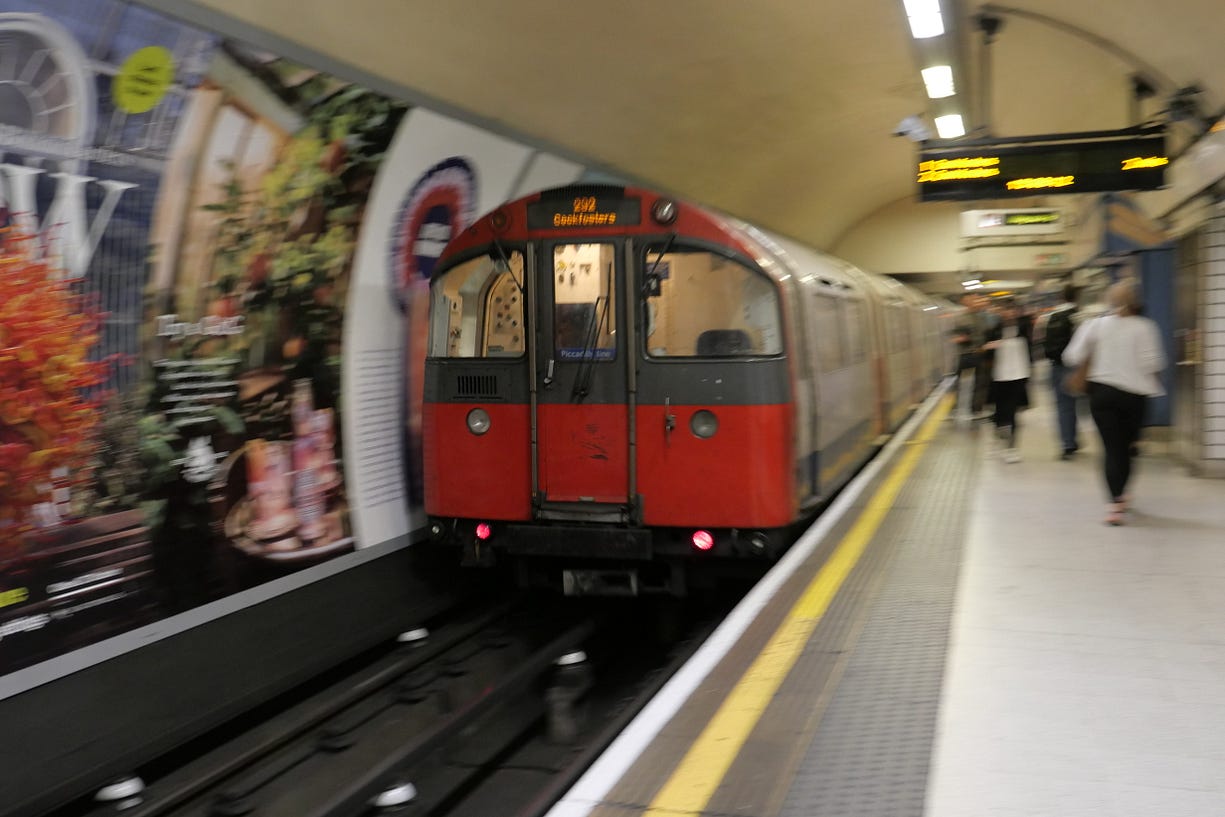
They are manufactured by the same manufacturer that makes Hong Kong’s M-trains on the Tsuen Wan, Kwun Tong, Island and Tsueng Kwan O Lines.
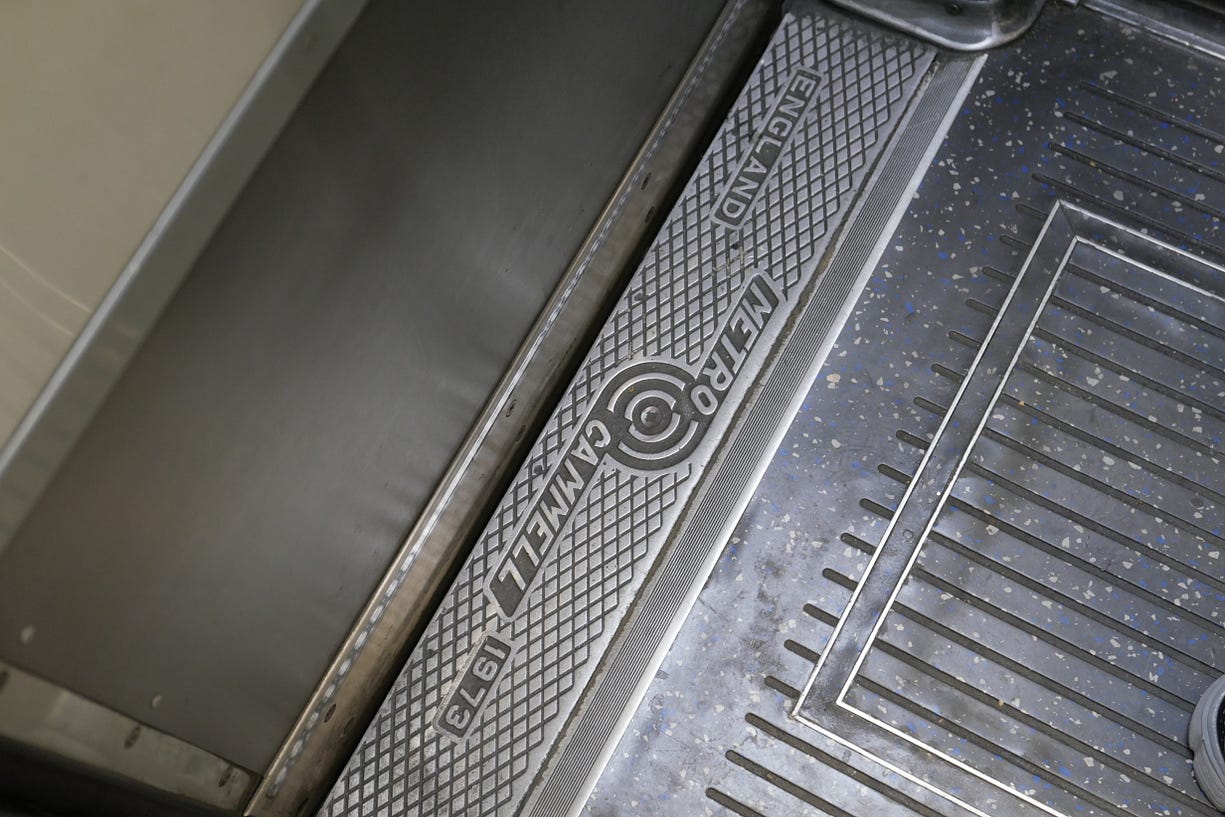
Why are there platform de-icers in the middle of September?
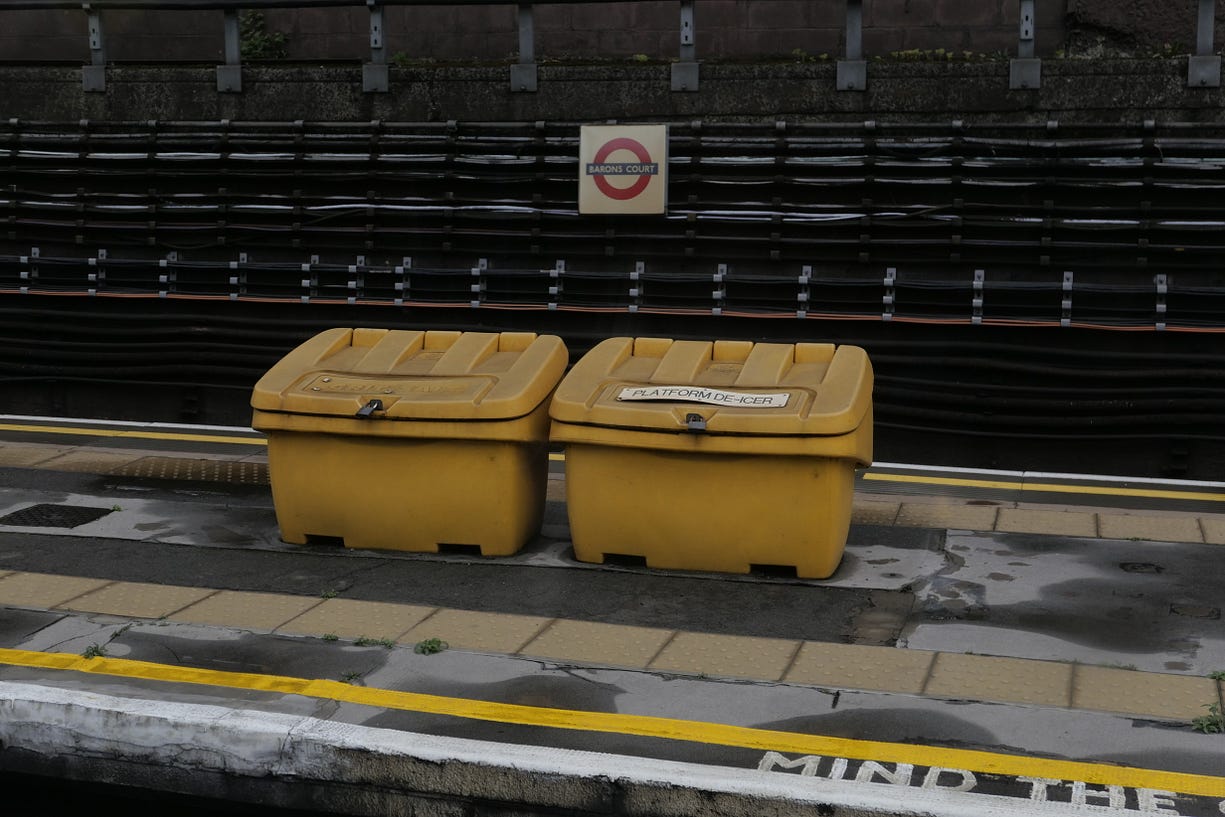
Incidentally we boarded on to a train with a bunch of tourists with lots of luggage. I’m not sure whether this is a rare sight or not, considering that this line connects Central London and the Airport.
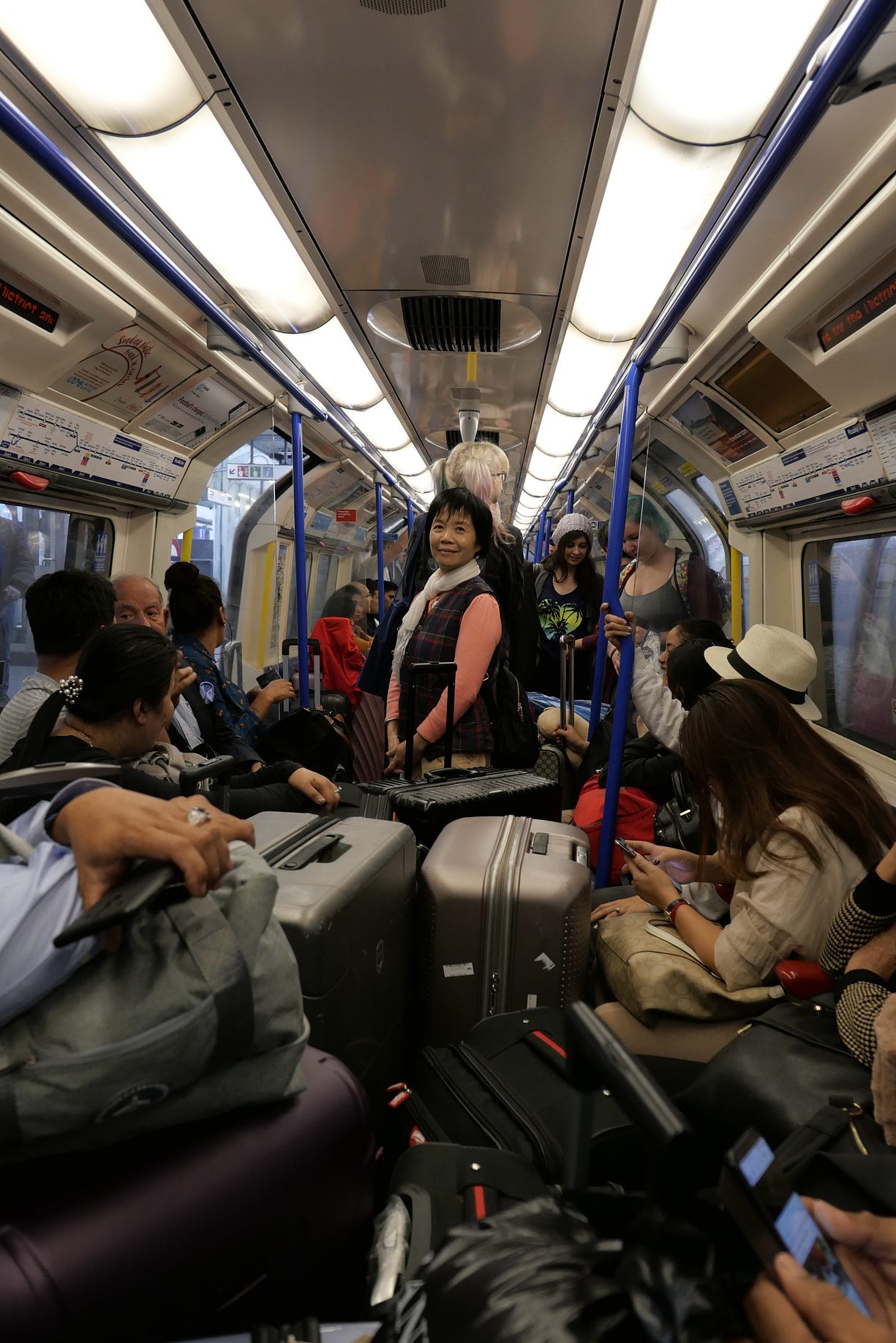
After a long tedious train journey, it sometimes just feels kinda daunting to walk through the long tunnels within the underground.
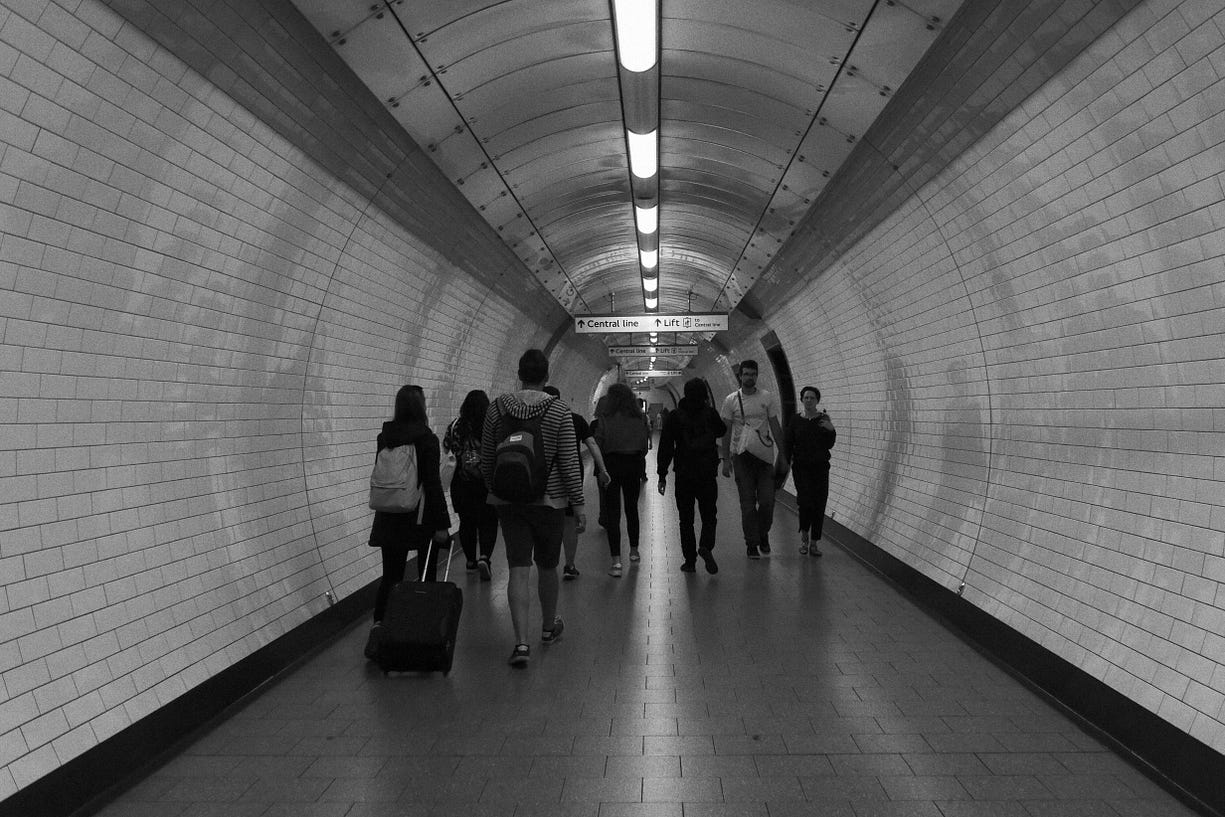
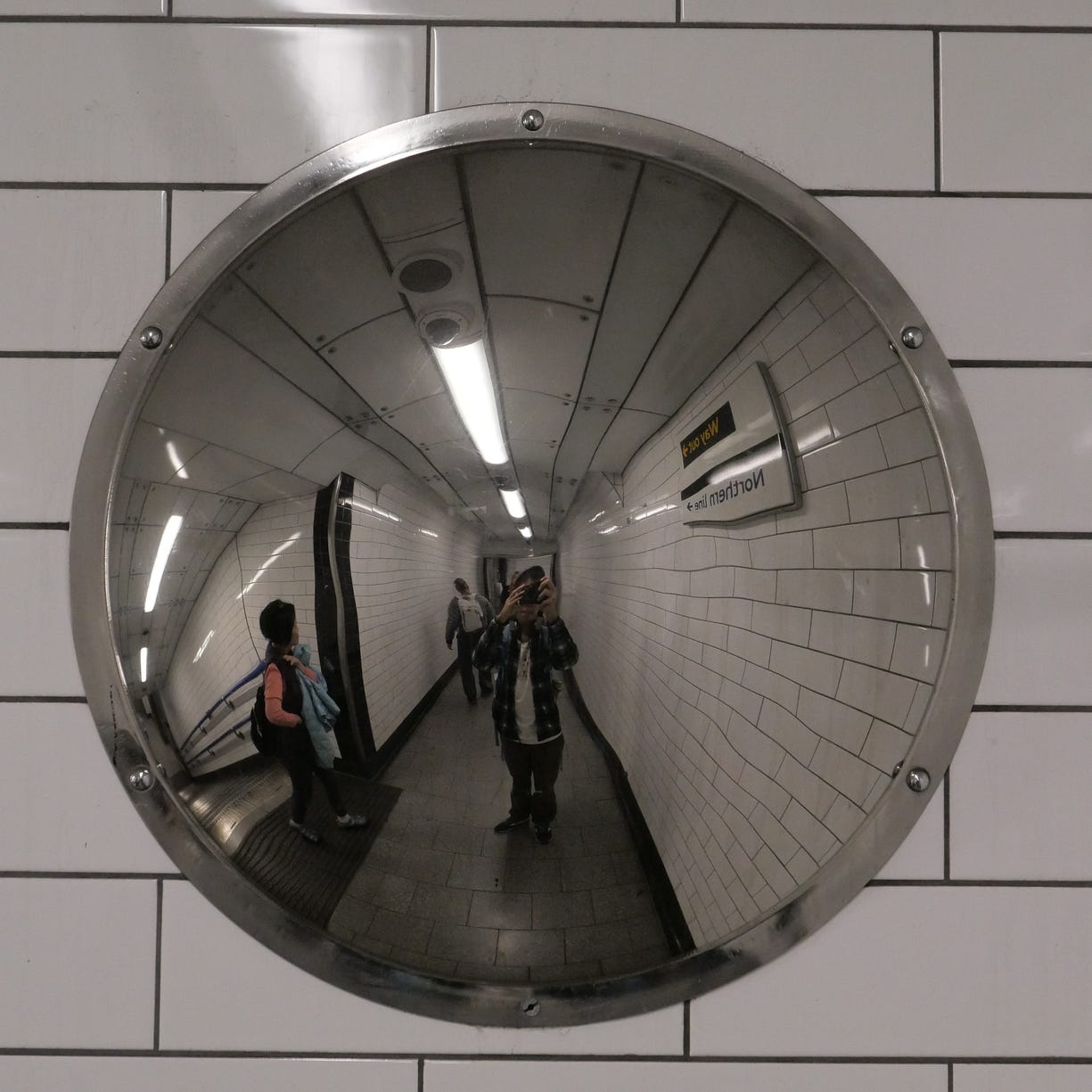
In fact, at Covent Garden, you have to walk 193 steps to ground level.
Except no one actually needs to walk through this, as there’s actually several lifts that transport masses of passengers to ground level. Those lifts are even larger than the ones at HKU or Lei Tung in Hong Kong’s MTR network.
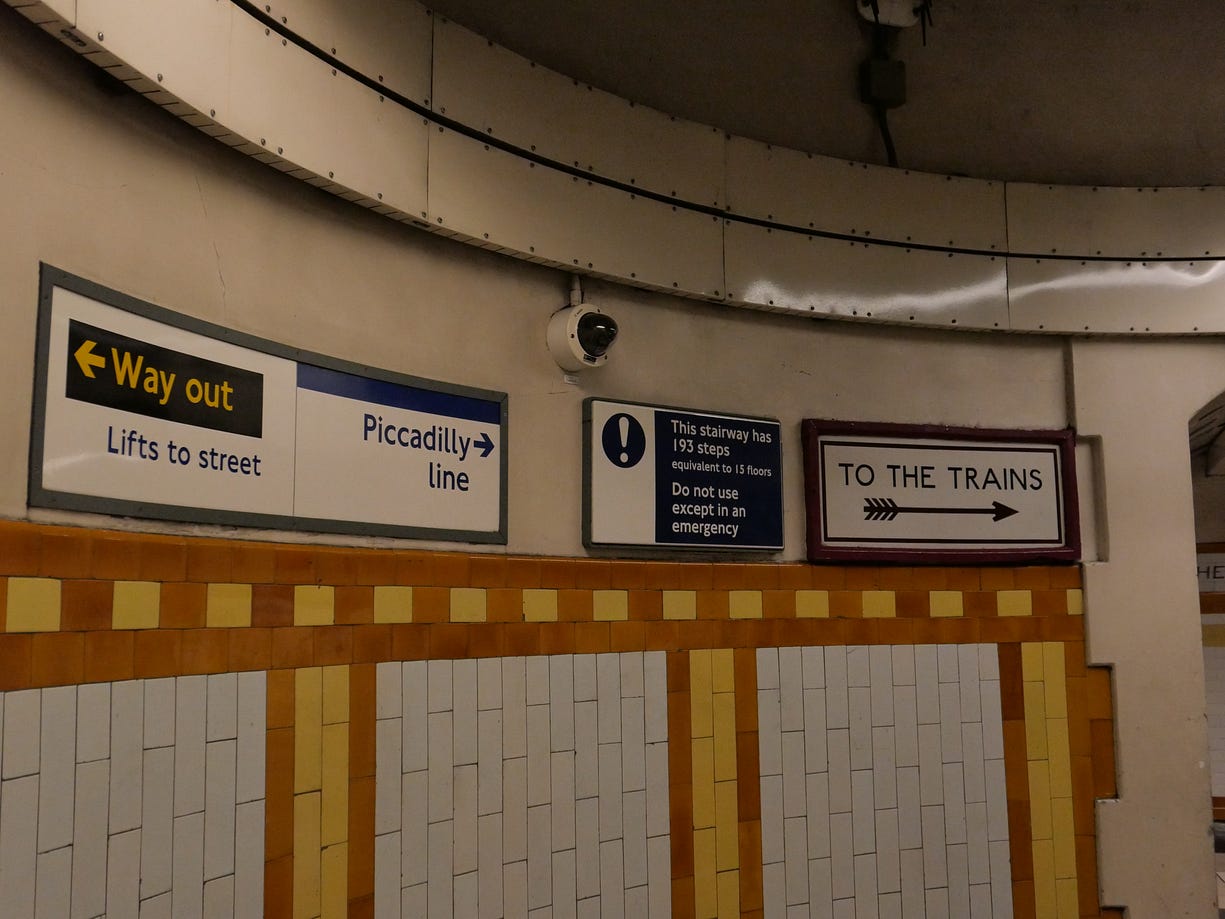
Jubilee Line
The 1996 stock on the Jubille Line is notably similar to the 1995 stock on the Northern Line, but I’ve heard articles about the 1995 stock having more modern equipment than the 1996 stock. (what?)
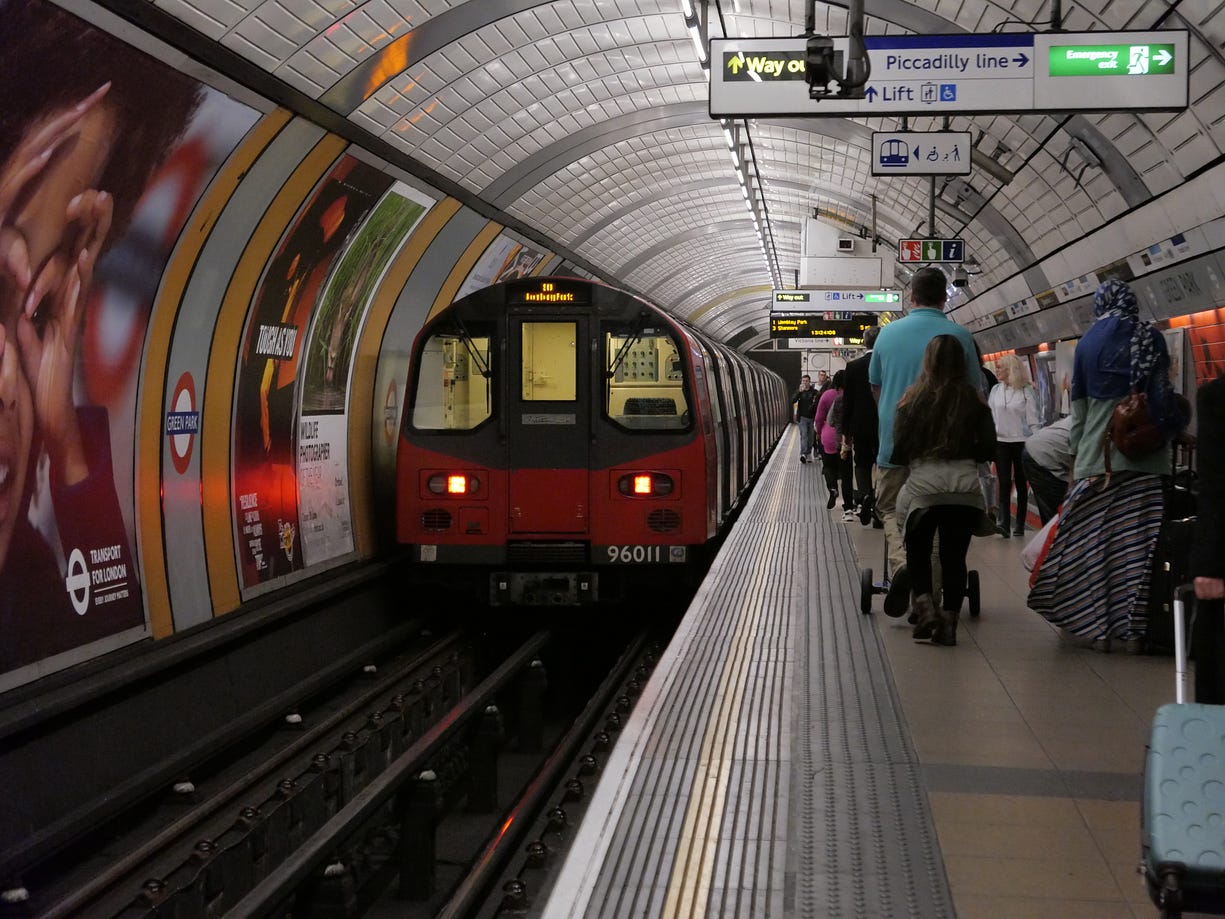
Despite its prevalence in Hong Kong, platform gates are a rare sight in the London Underground. It feels weird to suddenly see platform gates again. I believe they are only installed in a few zone one Jubilee Line stations.
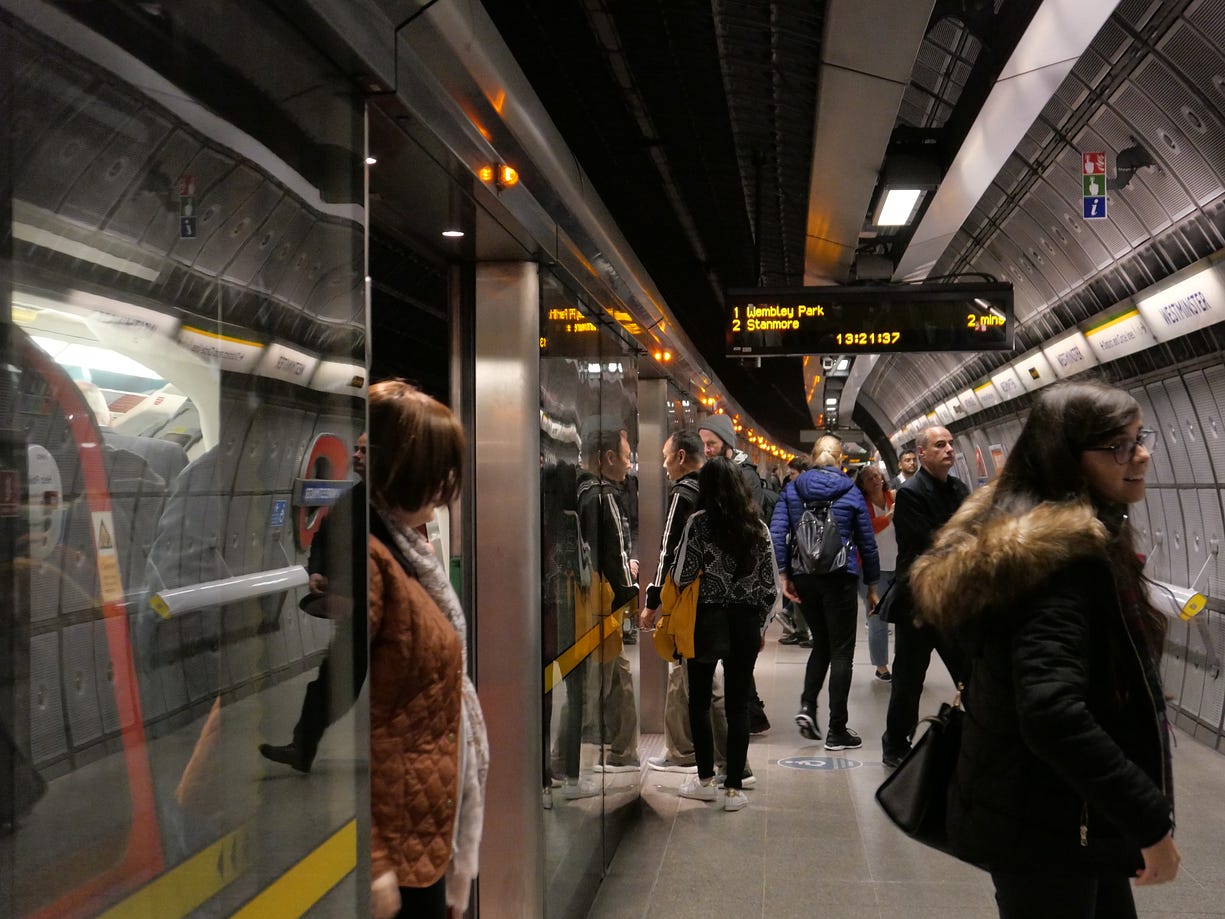
Both the photo above and below are taken at Westminister.
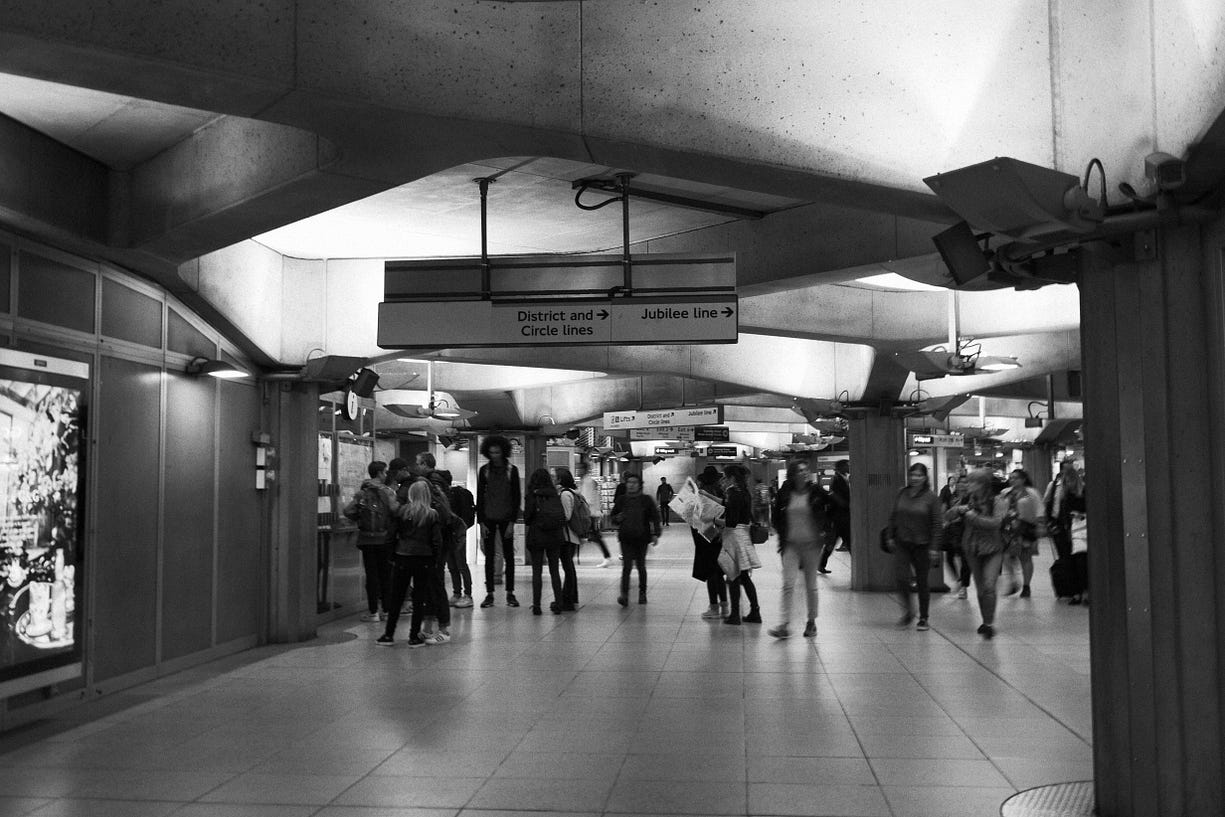
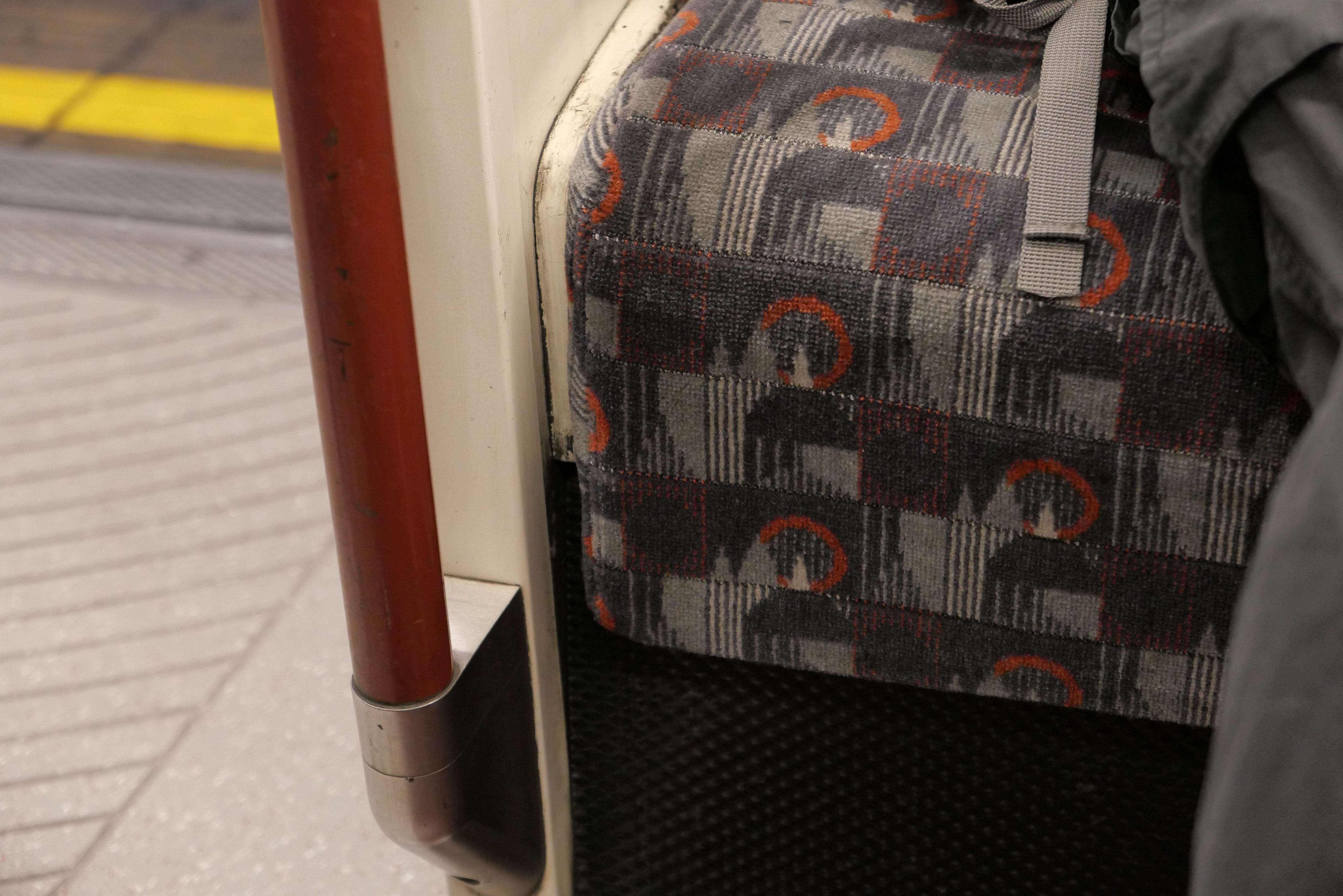
Bakerloo Line
The Bakerloo line is run on the London Underground 1972 stock, the oldest trains currently on the network. In fact, they don’t even have electronic displays for the train destination at the front.
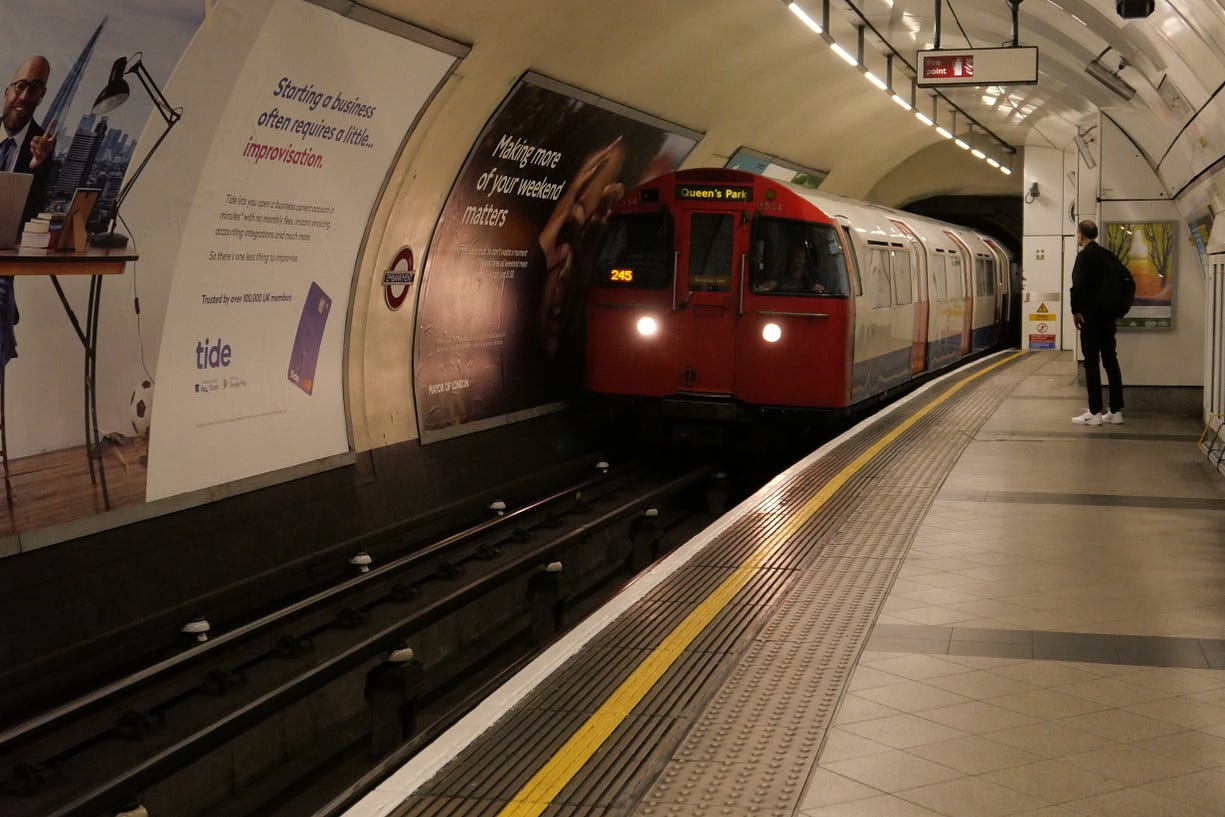
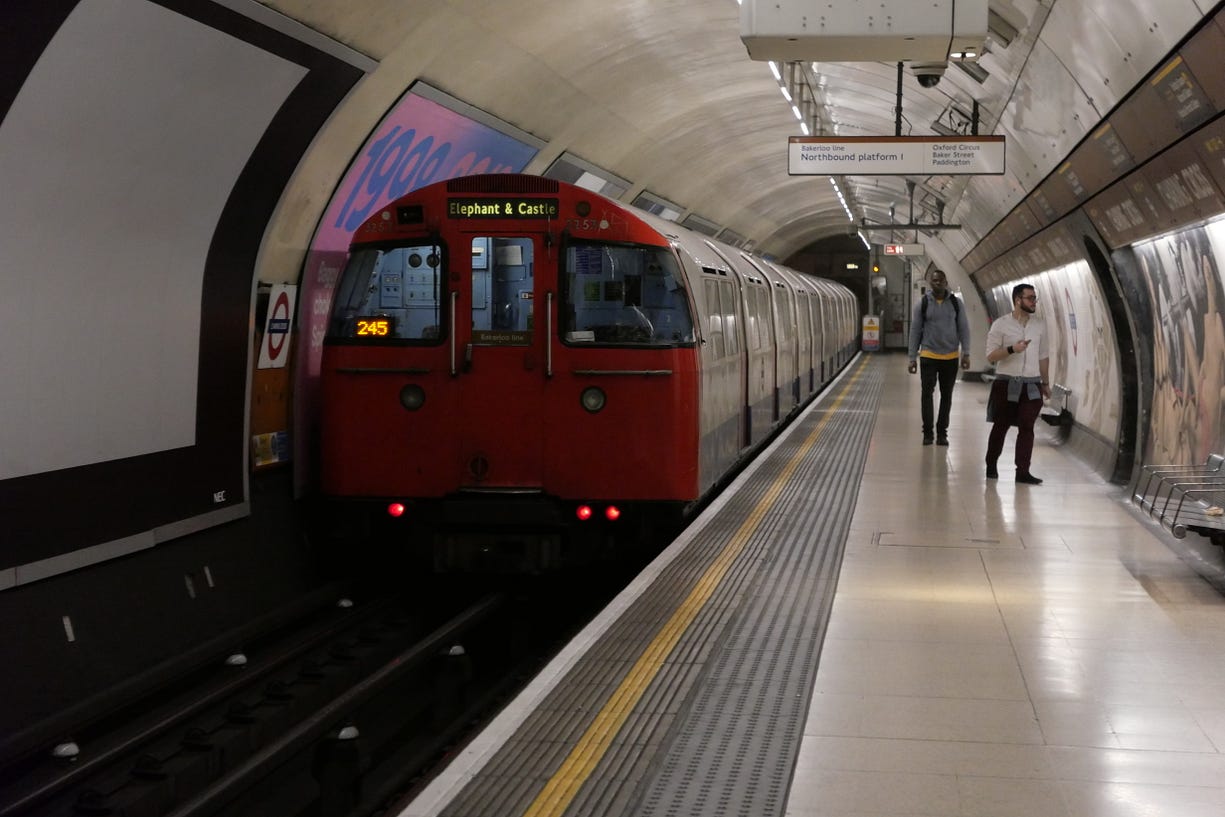
Those of you with keen eyes would have noticed that the Northbound destination is displayed on the front of the train (first photo) while the southbound destination is displayed on the back of the train (second photo). Is this a mistake or not? It does seem convenient to place static destination cards like this, such that drivers won’t need to replace the destination card at the end of the line.
Somehow, the warm tone of the carriages lighting makes the train seem even older.
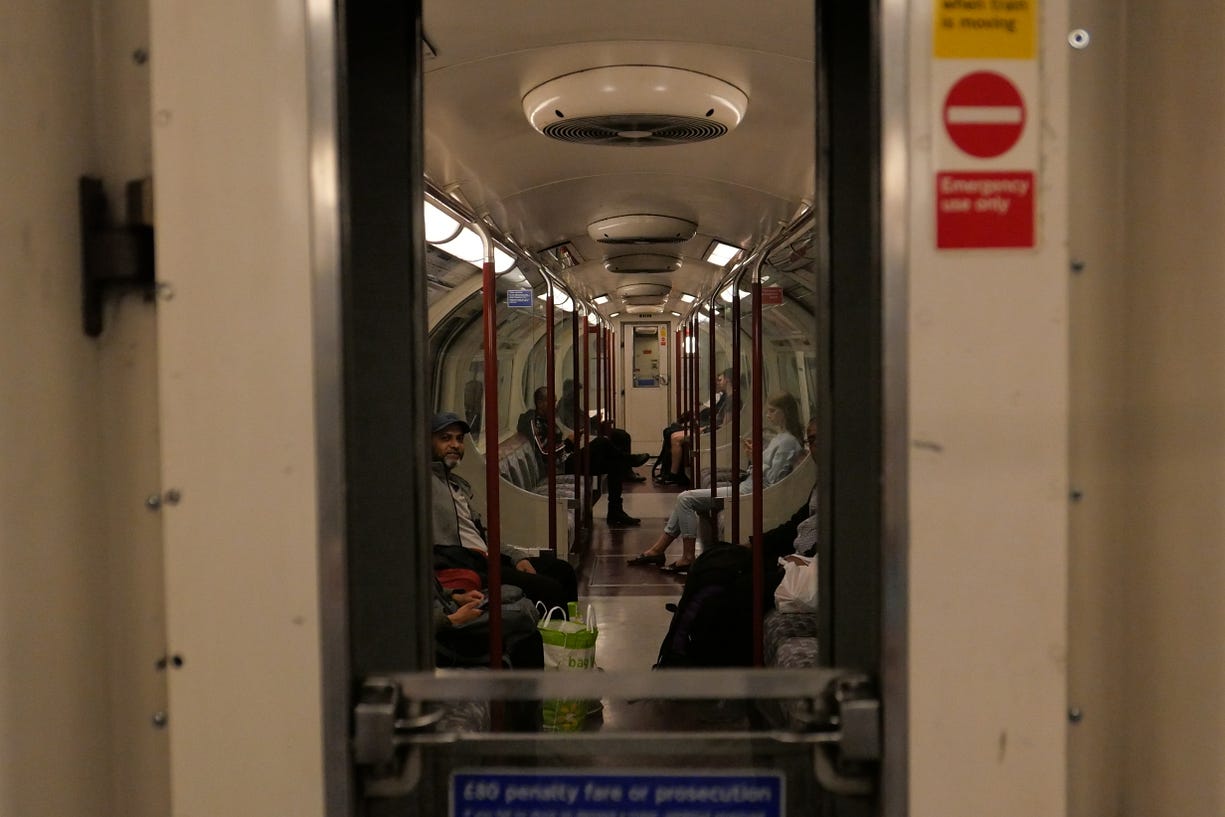
Notice that the sliding doors on this stock are sandwiched between the exterior and interior metallic body, which is quite an antiquated but elegant design. Other than Tokyo, I haven’t seen this type of sliding doors before. Most companies today either opt for exterior sliding dors for simplicity and efficiency, or plug doors for slightly better aerodynamics (which is quite insignificant I think).
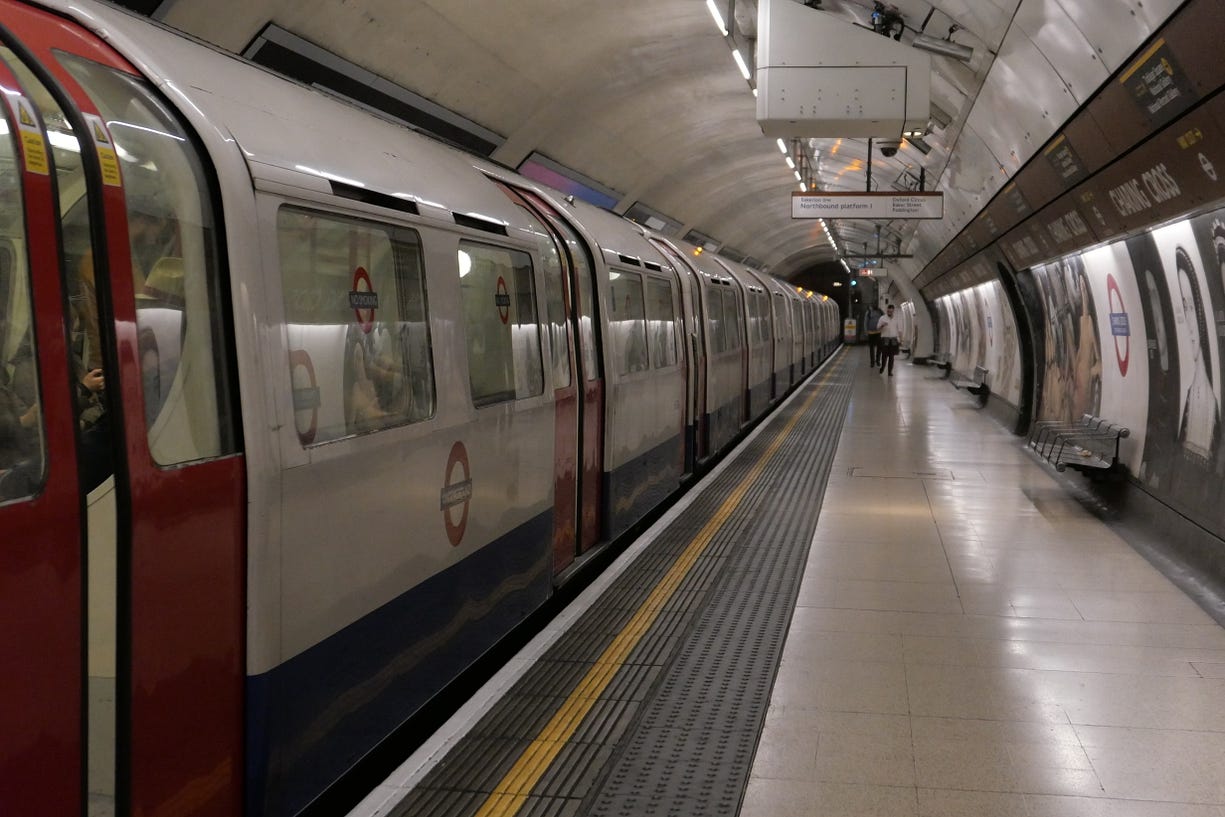
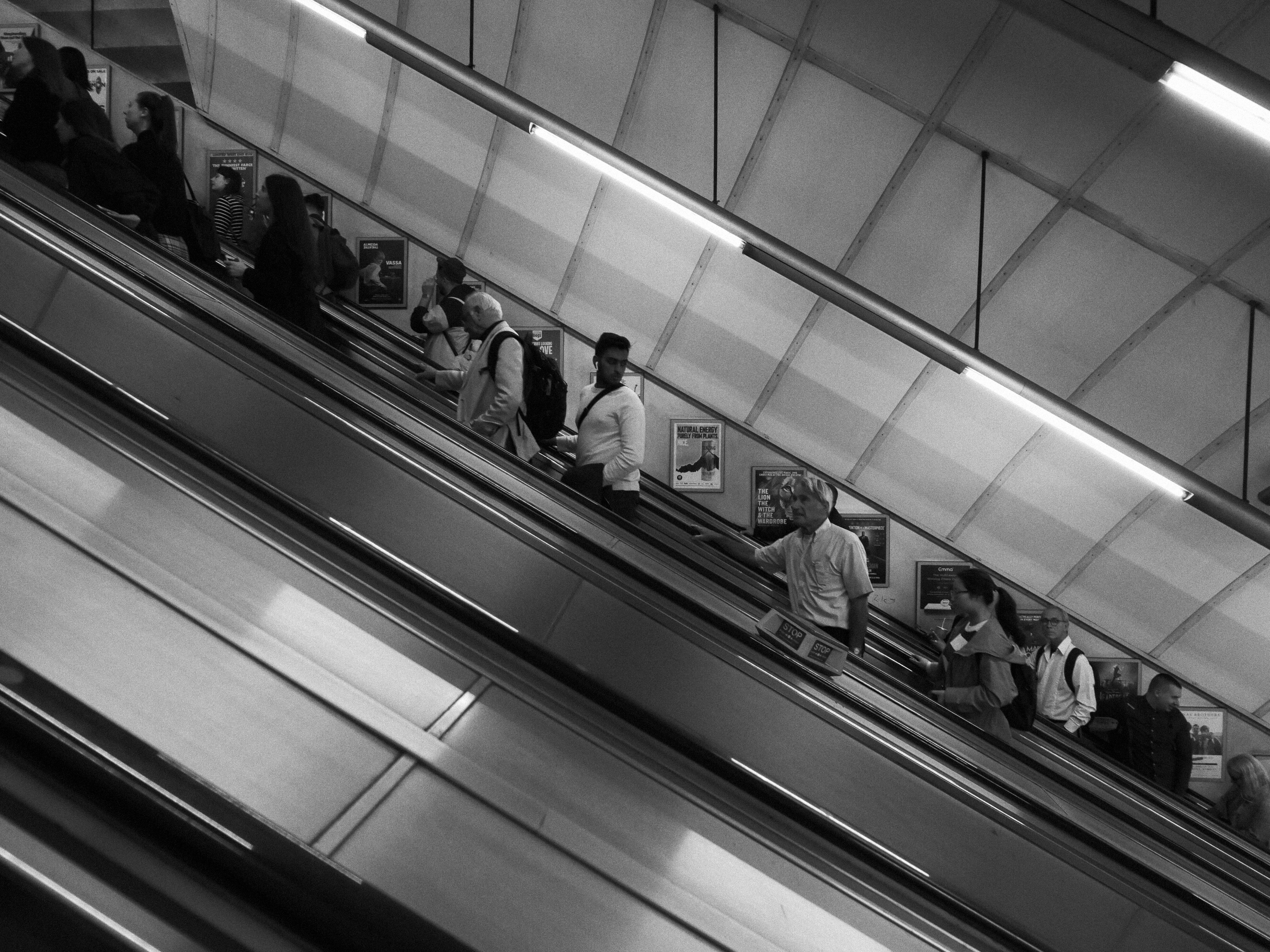
Central Line
Ionly travelled through a few stops on the Central Line, but I do have a few shots of its London Underground 1992 stock trains.
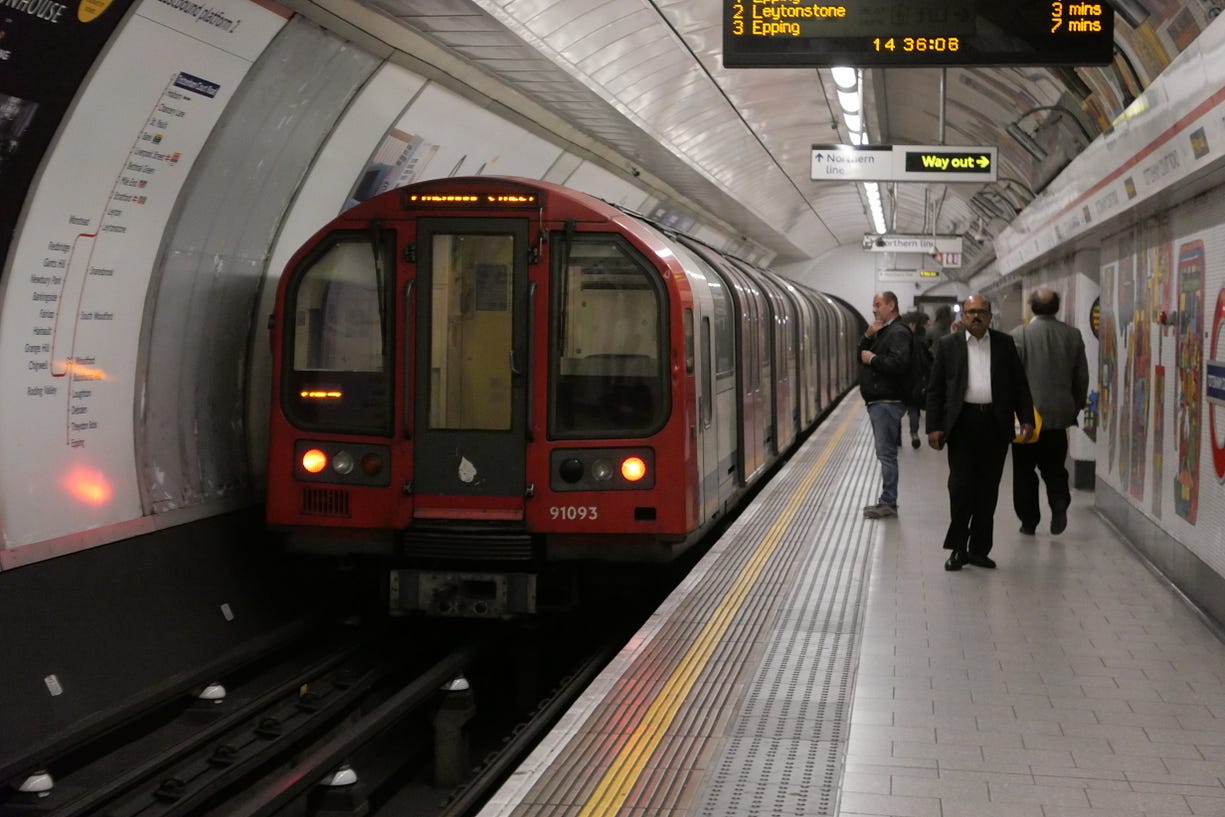
The carriage was crowded on the day we went there.
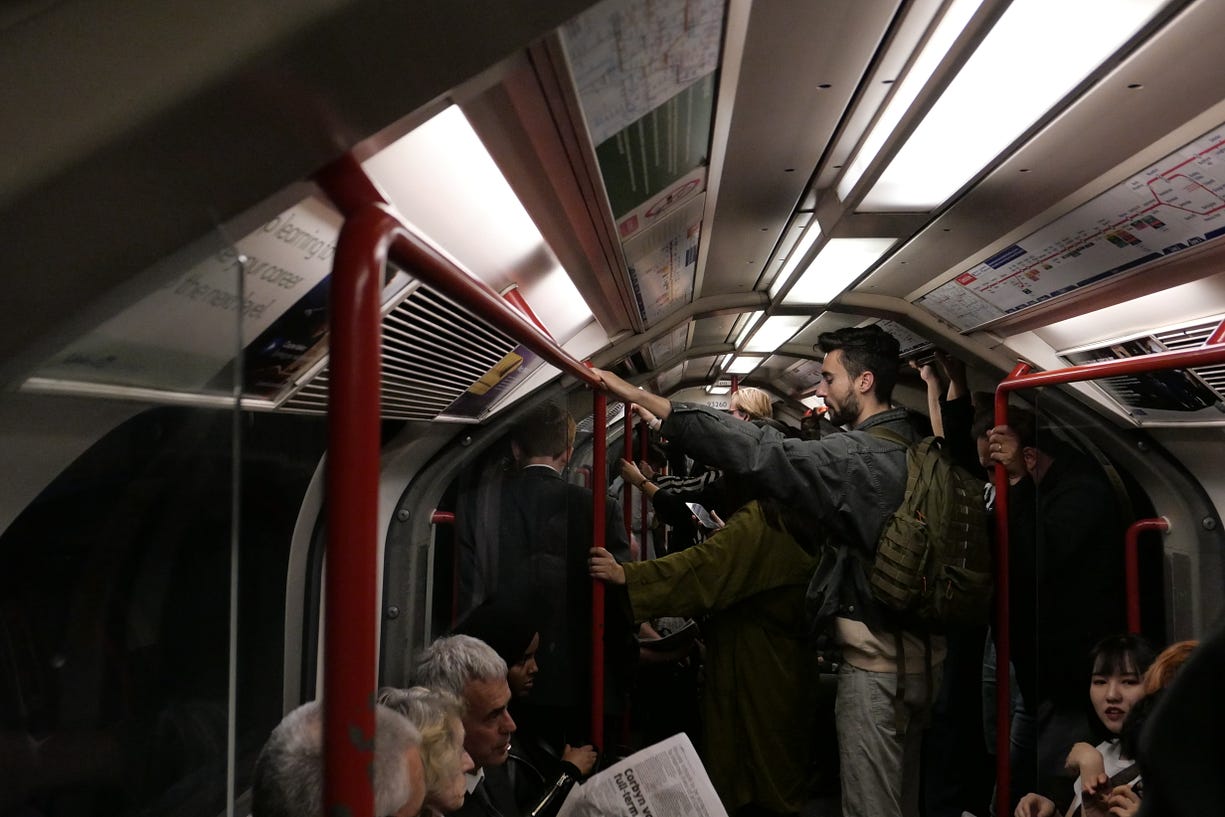
The Waterloo and City Line, which is the shortest line on the tube, also uses the same trains, but unfortunately it was closed the day I was at Bank. Closed lines, delayed service, or daytime maintenance is commonplace in the underground network, unlike Hong Kong’s MTR.
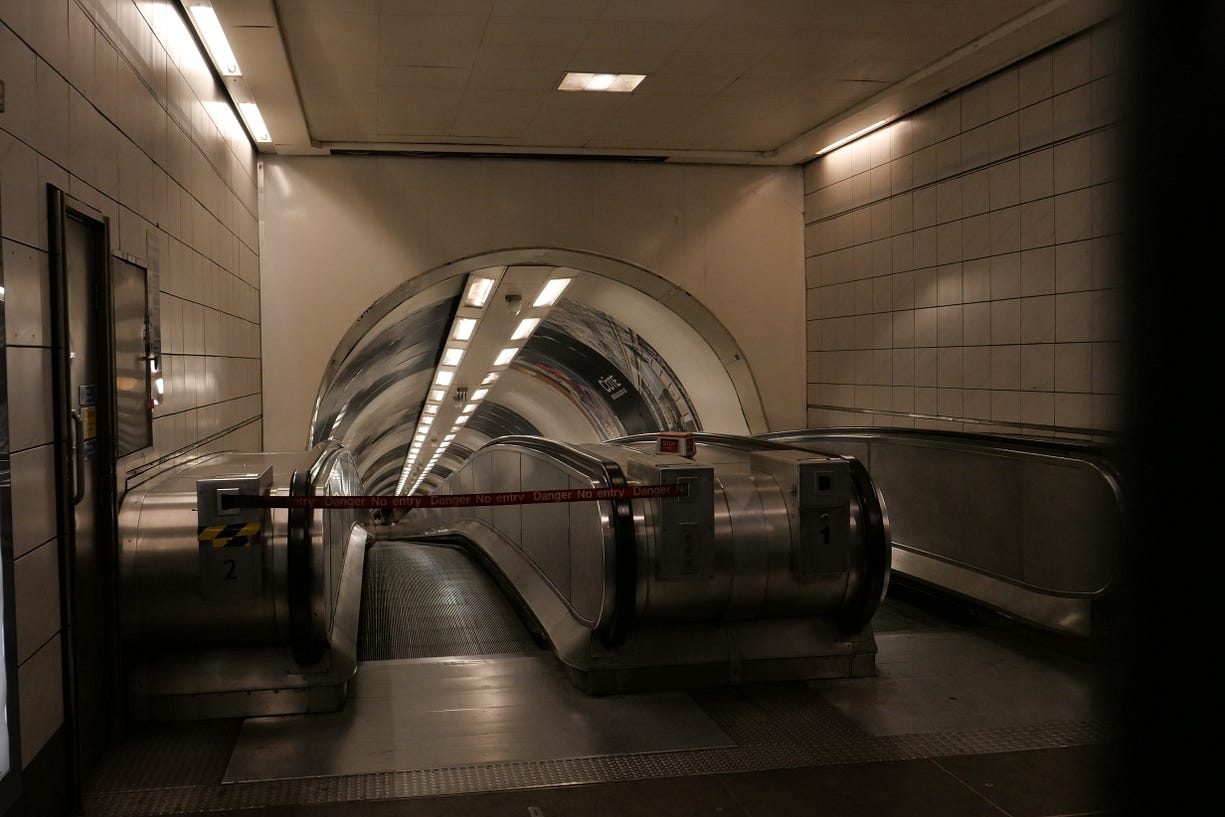
Victoria Line
The 2009 stock is currently the newest stock on the underground. You would think that it has features that we take for granted like air-conditioning or walk-through carriages, but no, it’s not the case, even for newer trains.
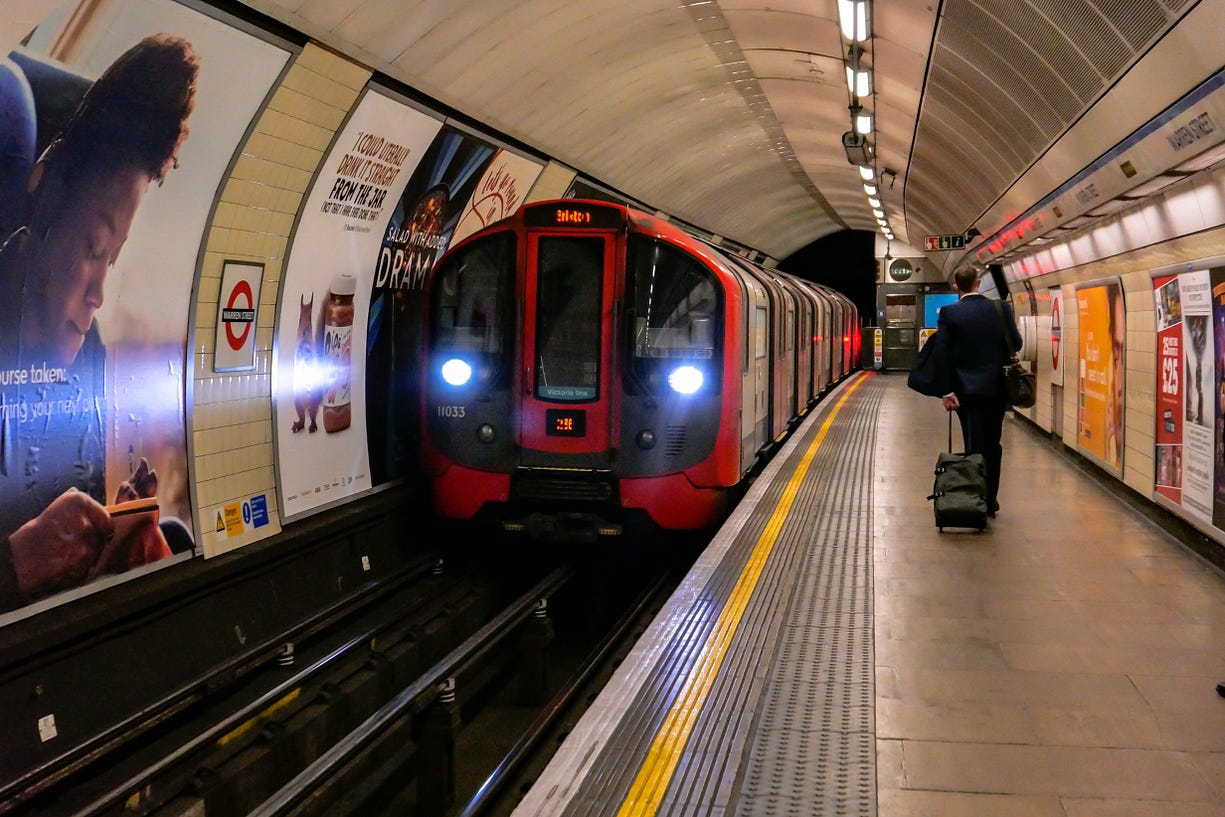
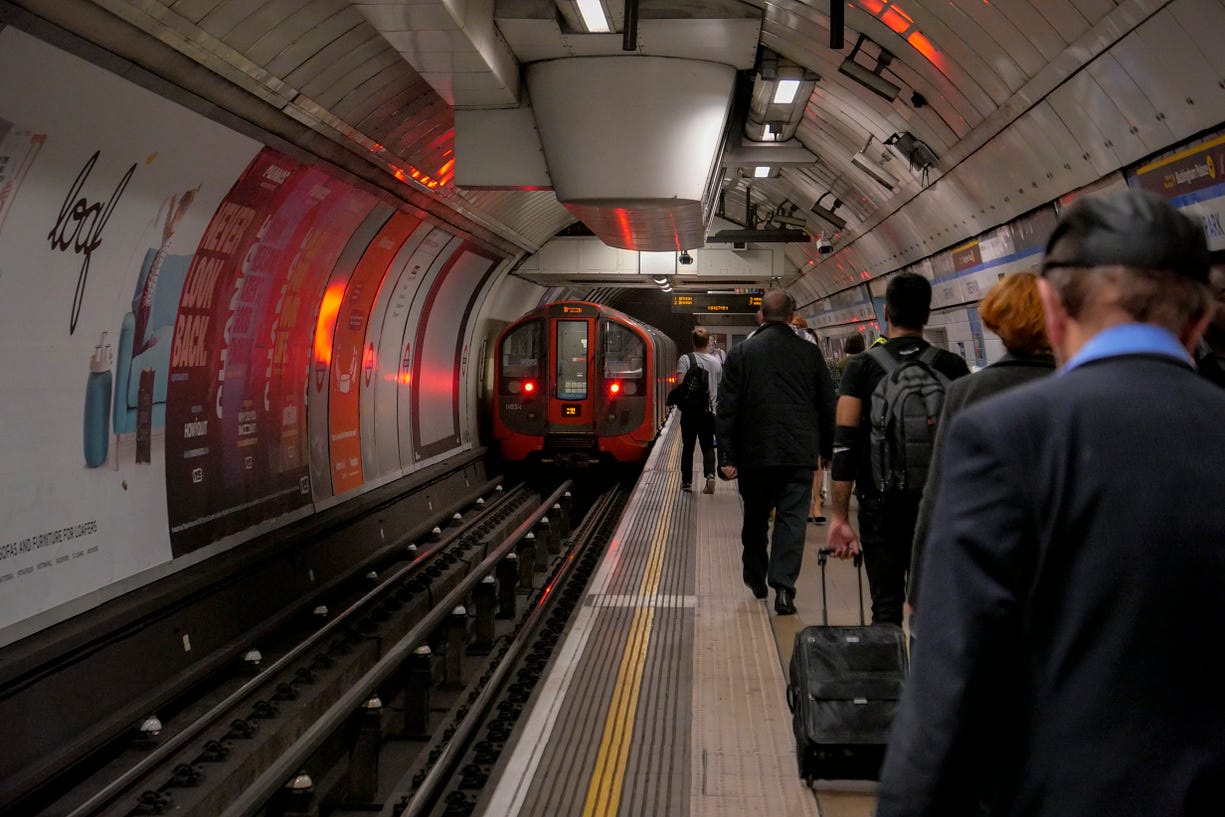
I know it’s not my first time on a deep-level tube train, but you are reminded of how small the carriages are every time you board or alight the train through the curved doors.
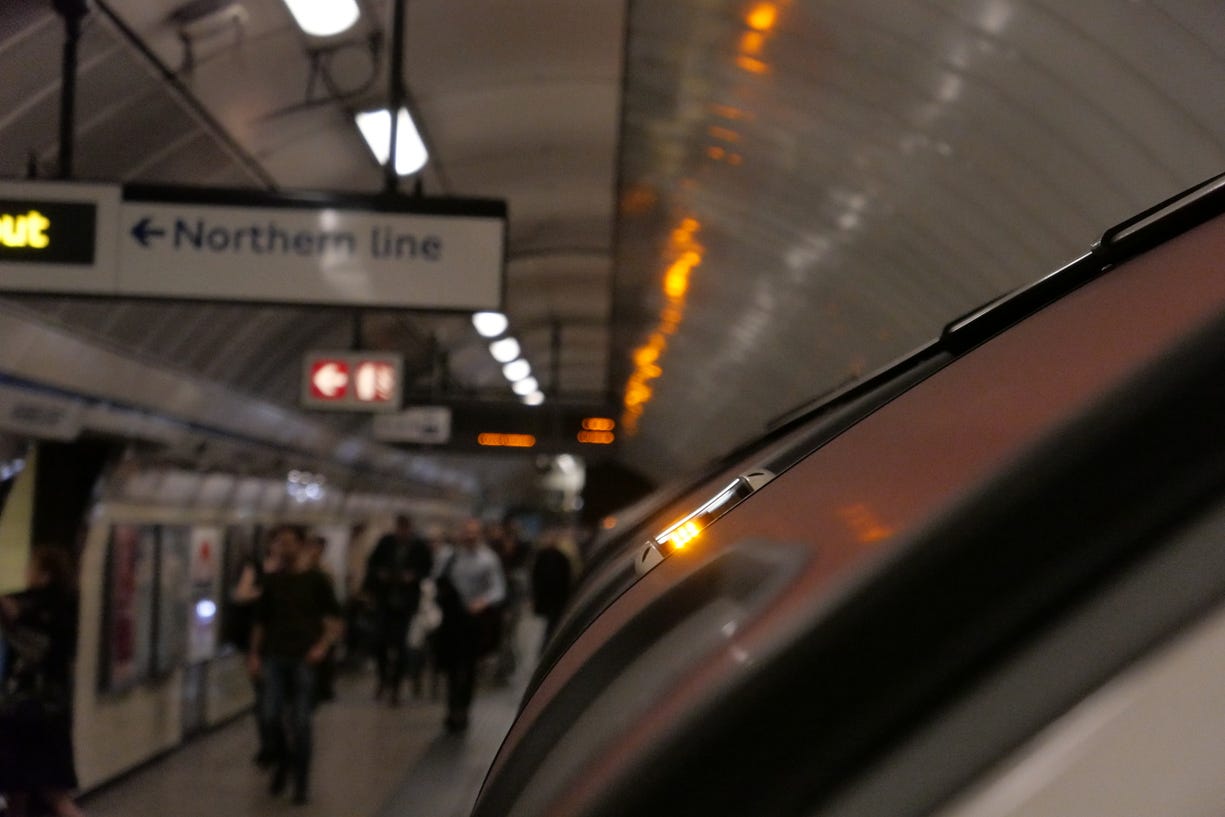
Are the maze on these walls there to reflect how lost passengers feel in the tube? (lol)
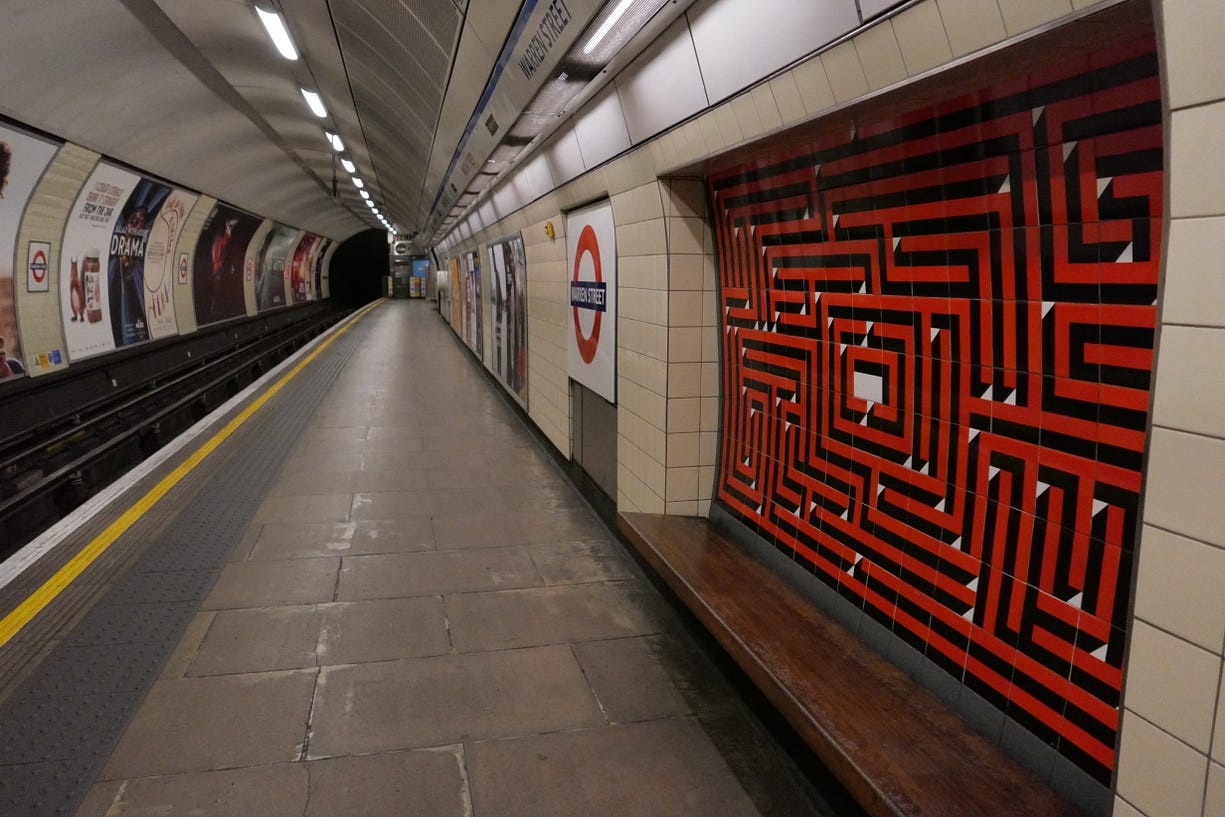
London Underground Subsurface Lines
The Circle, District, Hammersmith & City and Metropolitan Lines are the only subsurface lines in the underground network. As the name implies, they typically have tunnels which are much closer to ground level, with much larger and spacious tunnels for taller trains. I know that the ones running on the Metropolitan line have slightly different interior seating configurations, but since the trains on these lines are pretty much the same, I’ll round the shots all in one part.
This photo is taken at South Kensington, the station closest to my school!
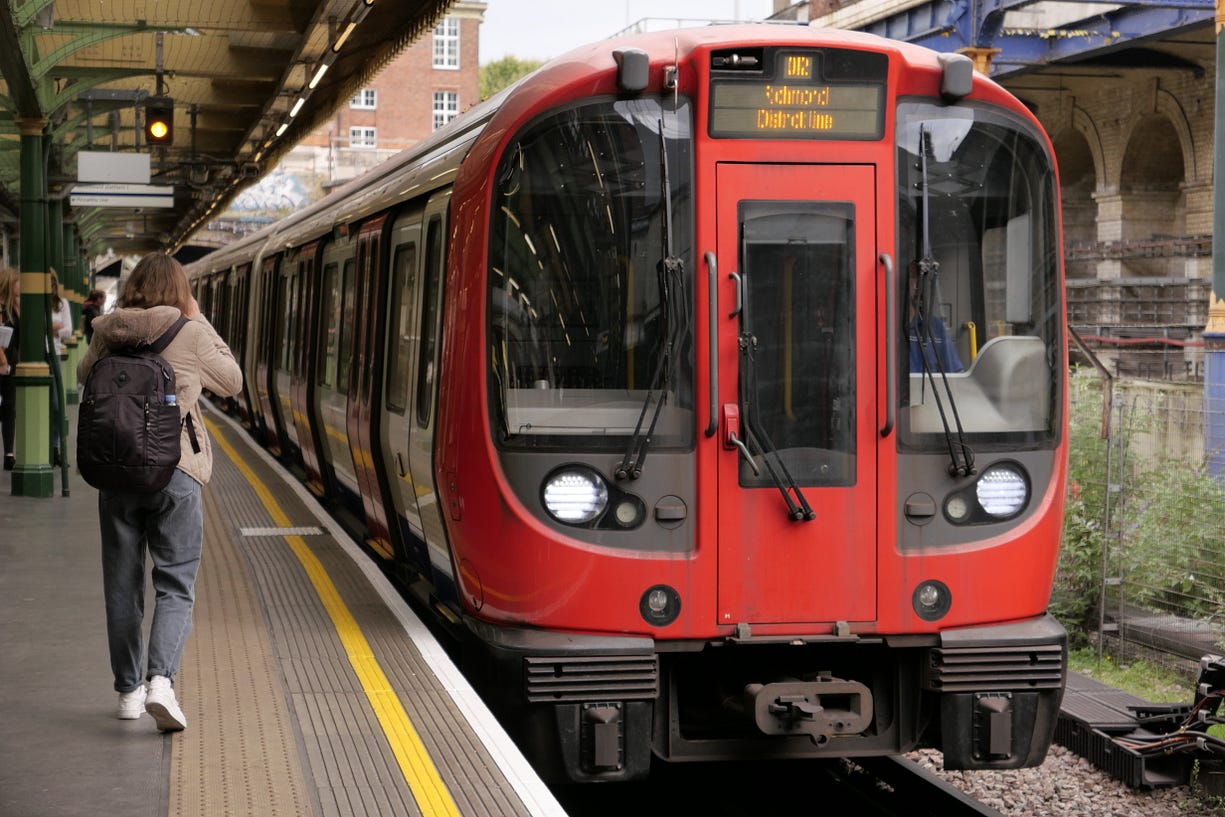
I kind of got lucky with this shot, as a photo that is taken a second either before or after would have otherwise resulted with the front of the train being submerged in the shadows.
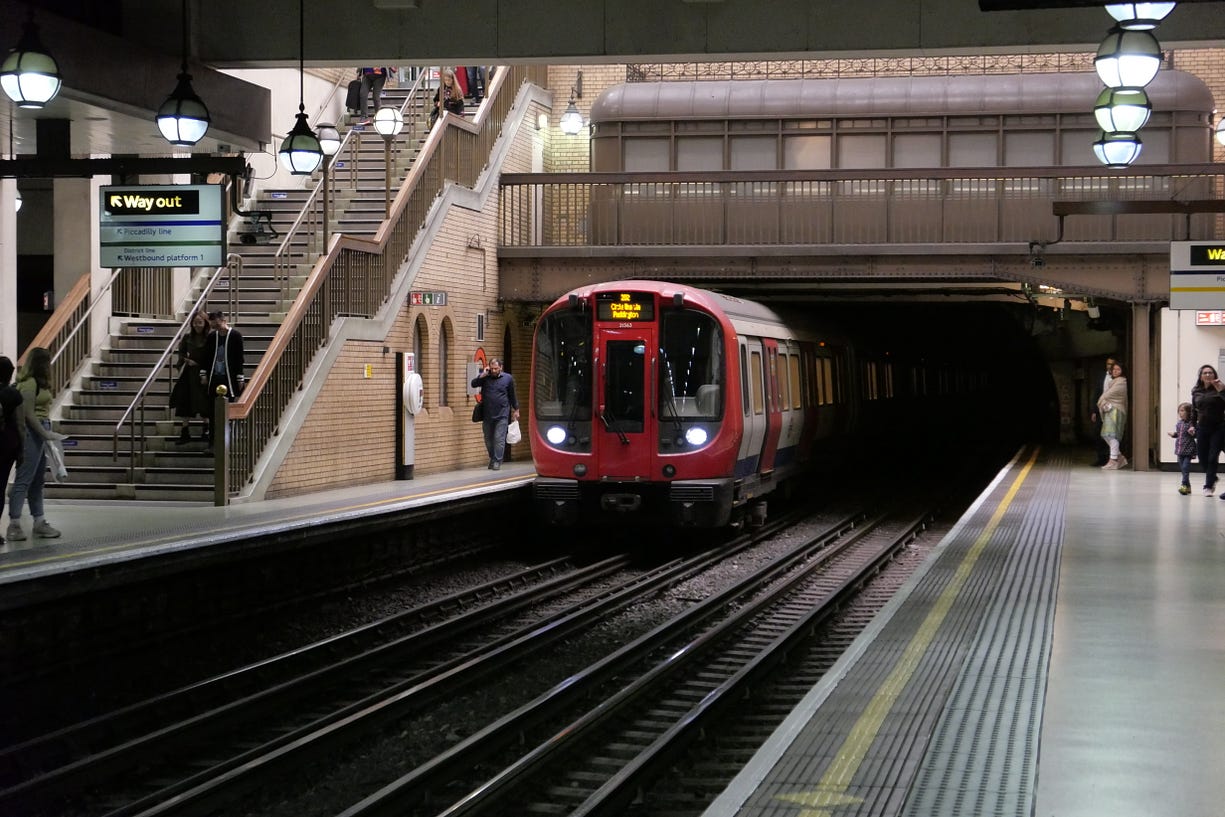
These trains are really much newer, with walk-through carriages and air-conditioning. (finally!)
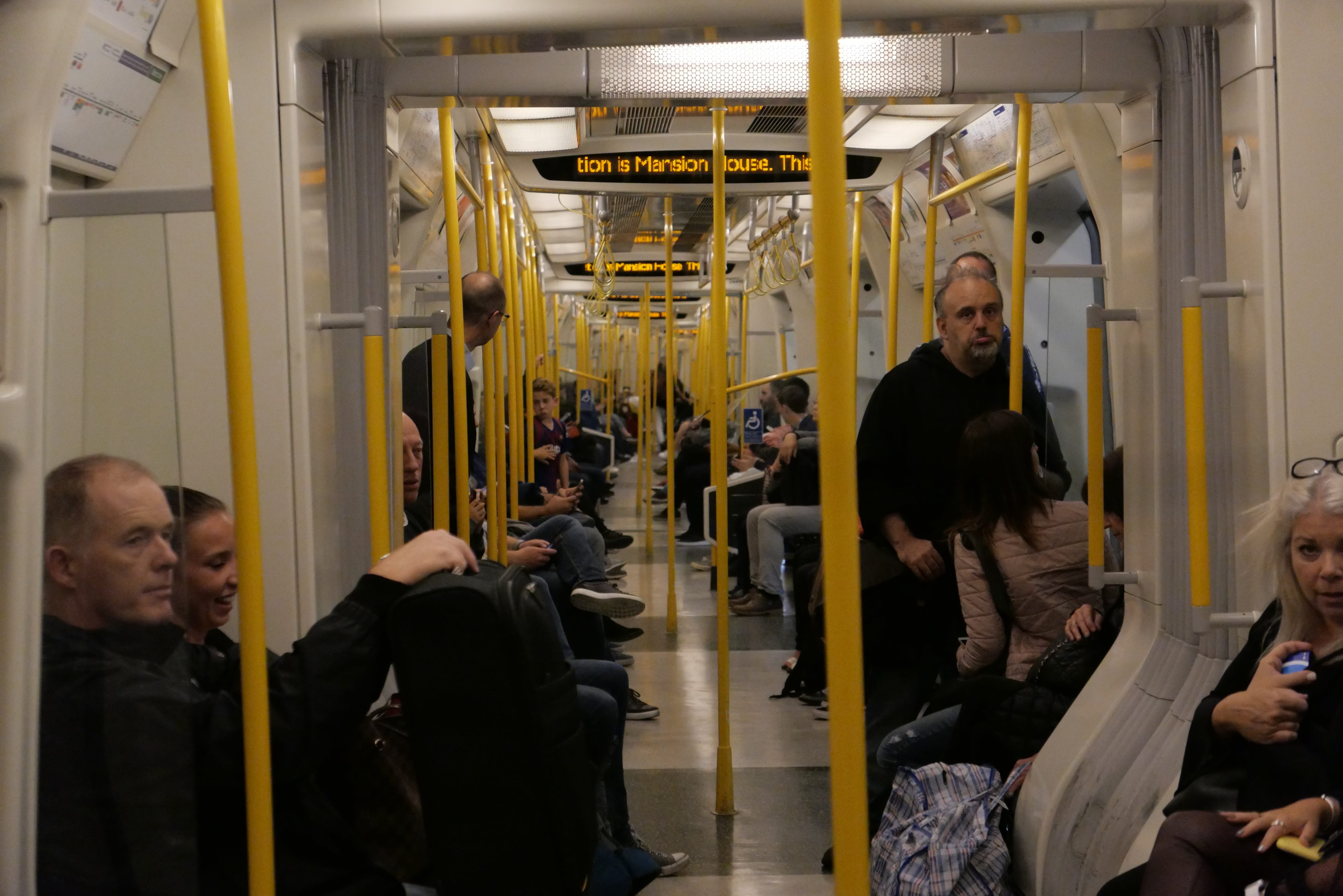
The fact that trains longer than the platforms of some stations really shows how old the underground network is.
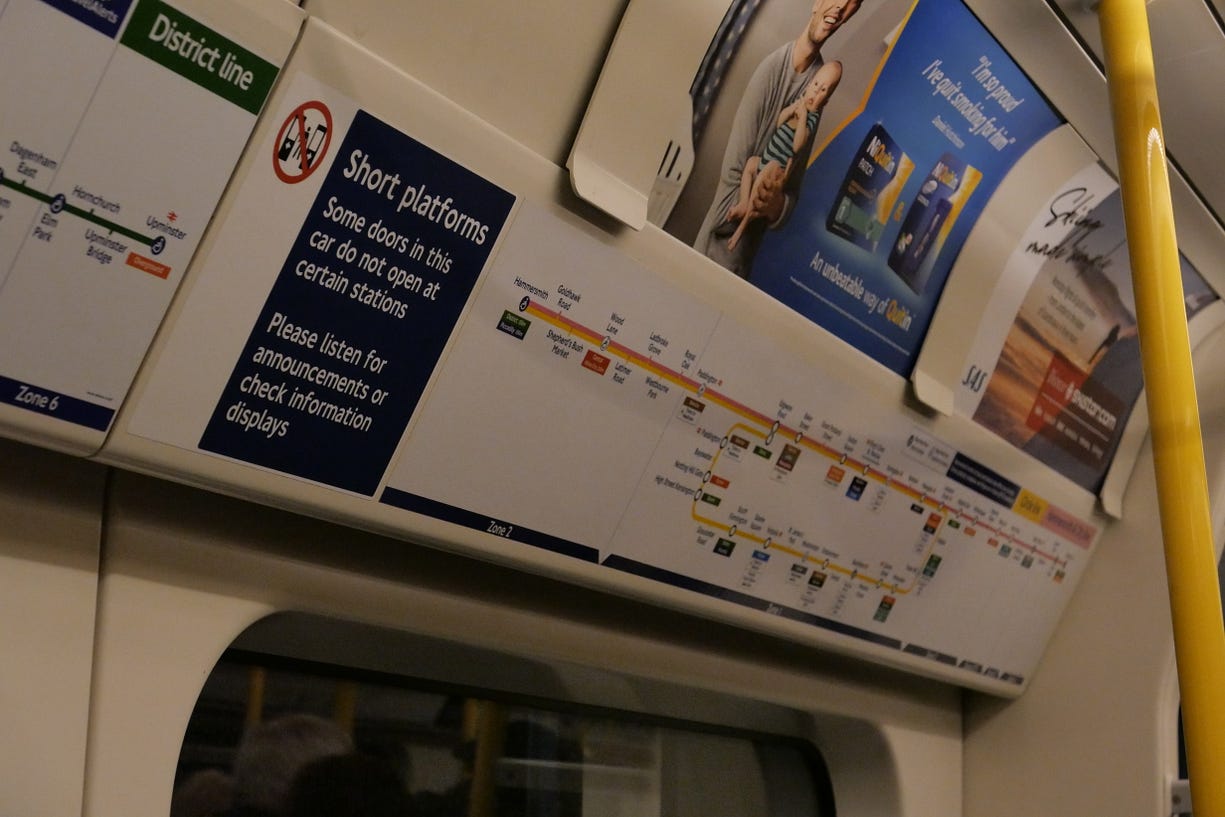
National Rail
I haven’t really had the chance to travel to anywhere too far from London, so I think it would be better to round them up all in one section.
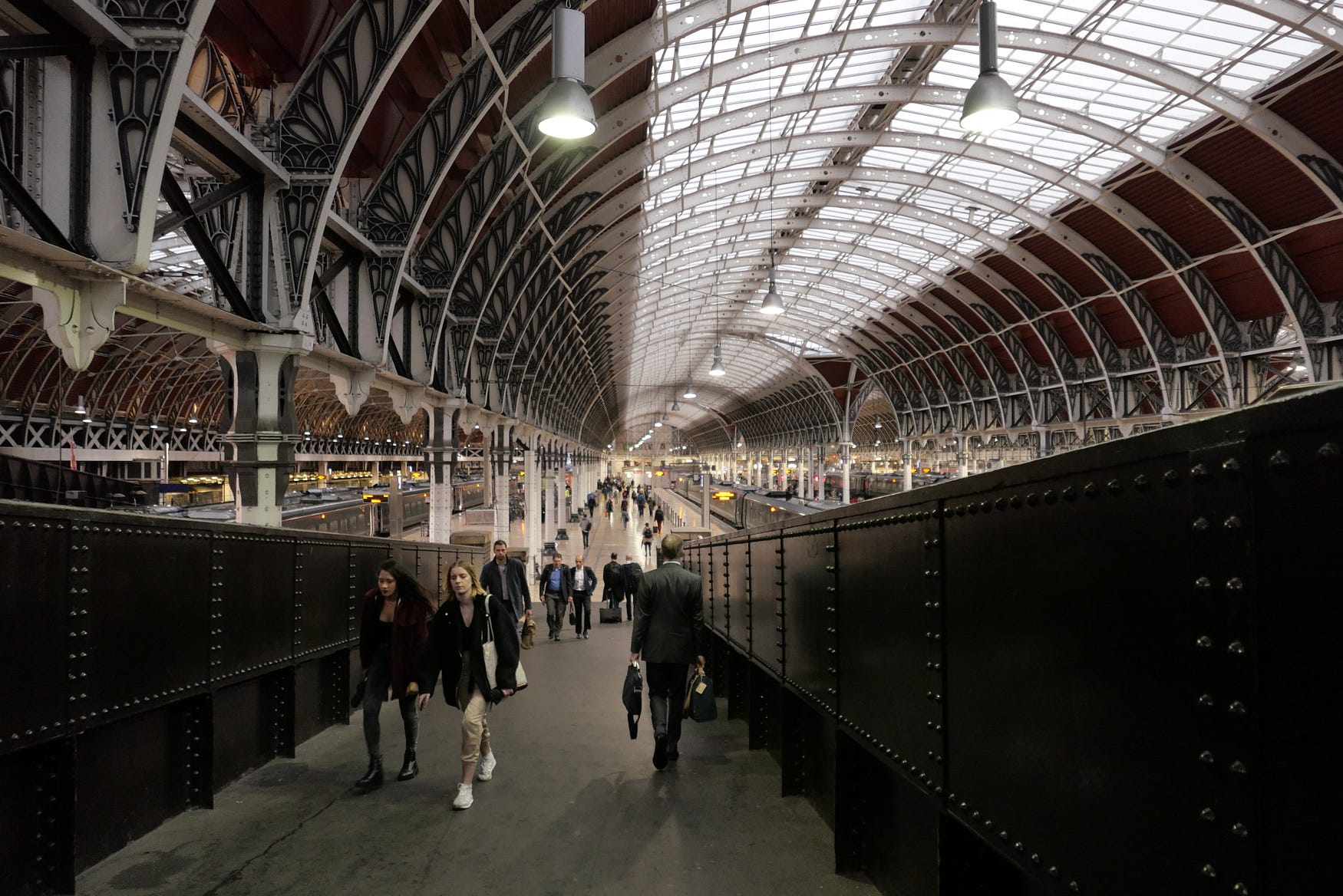
Great Western Railway (GWR)
One of the first excursions we made was to Windsor, west of Outer London. Our Journey starts at Paddington.
We bought our tickets from a staff who had a portable ticket printer and contactless card reader.
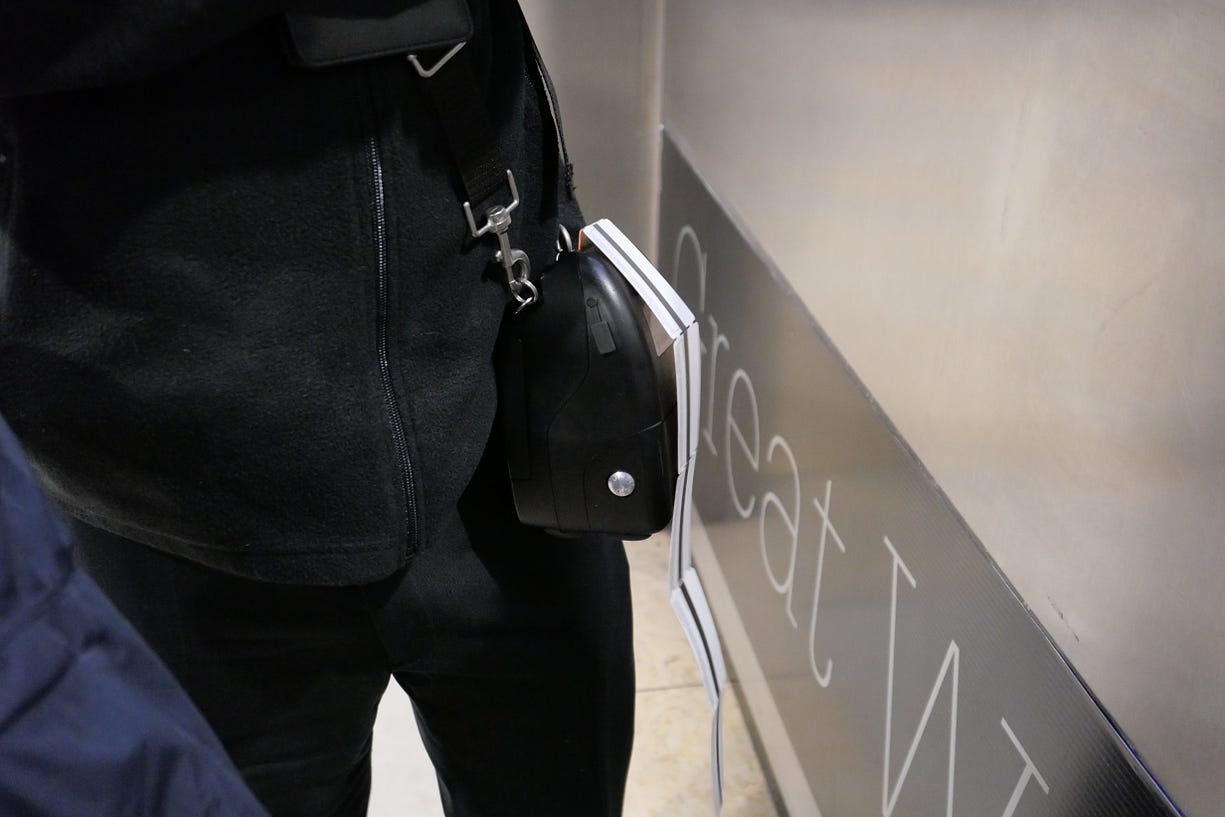
You really start to feel lost when you see so many departures on the information display.
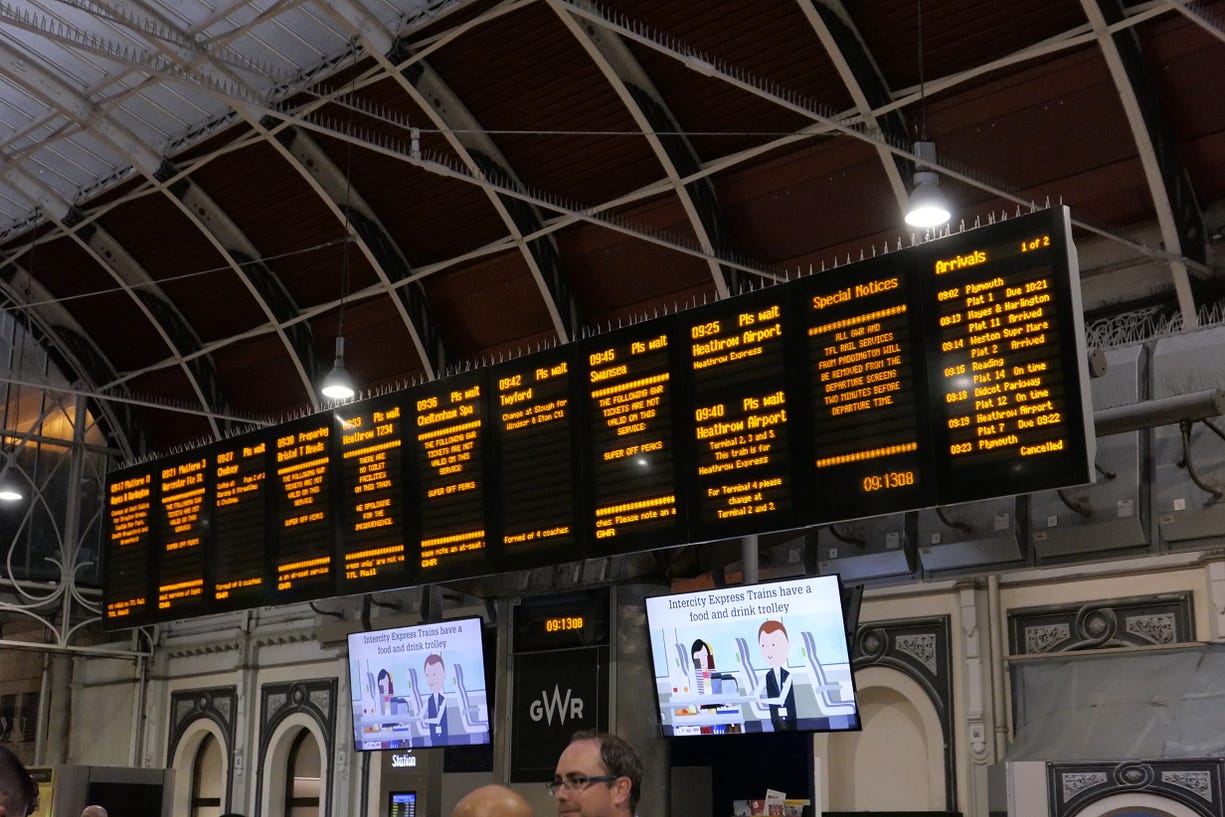
Aboard the train! It is a Class 800 Train, manufactured by Hitachi Rail, which I thought only makes air conditioners.
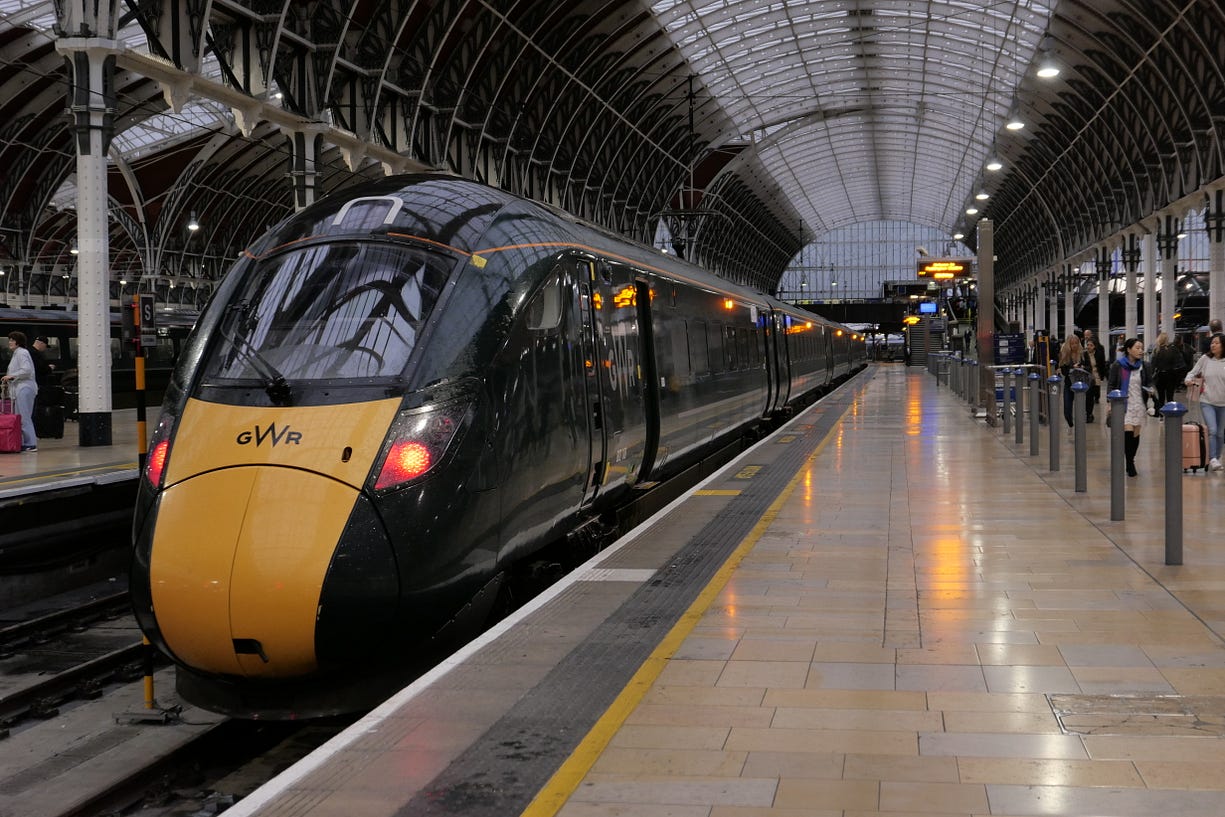
Since we bought a discounted ticket package, we weren’t offered assigned seats. The panel above each seat conveniently displays which seats are available and between which stations.
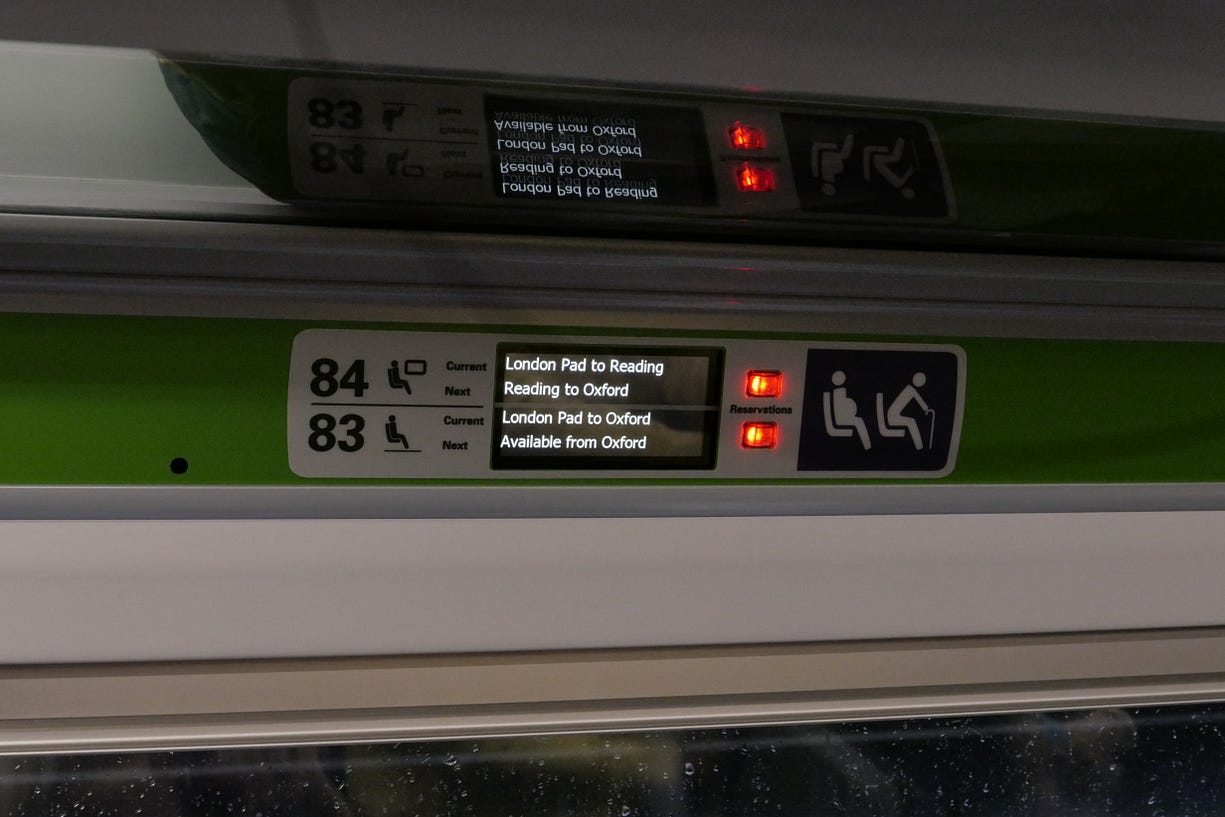
An express train speeding by Slough. It looks quite fast, but I’m quite sure it’s not as fast as China’s Fuxing or Hexie or Japan’s Shinkansen.
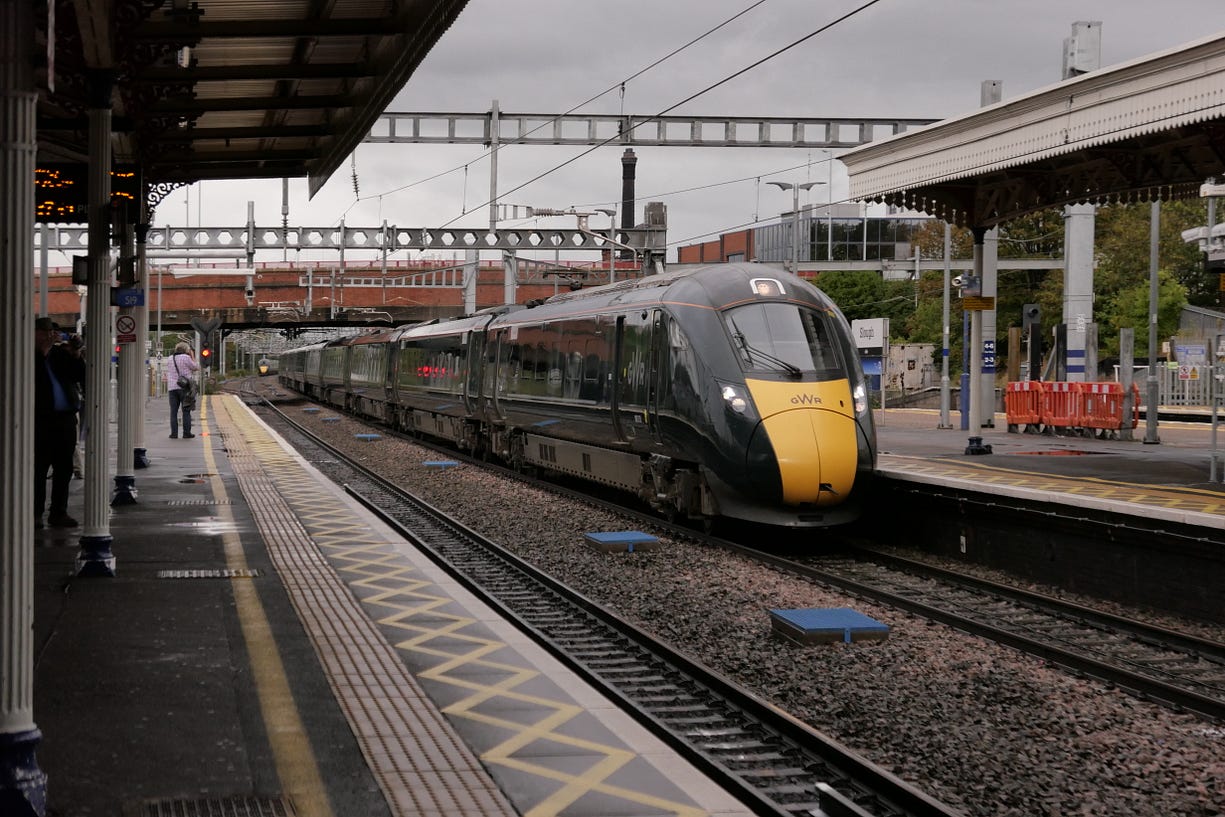
This is the Class 165 train we boarded from Slough to Windsor & Eton Central. Unlike most other trains, it is a diesel electric train that does not run on over-head cables.
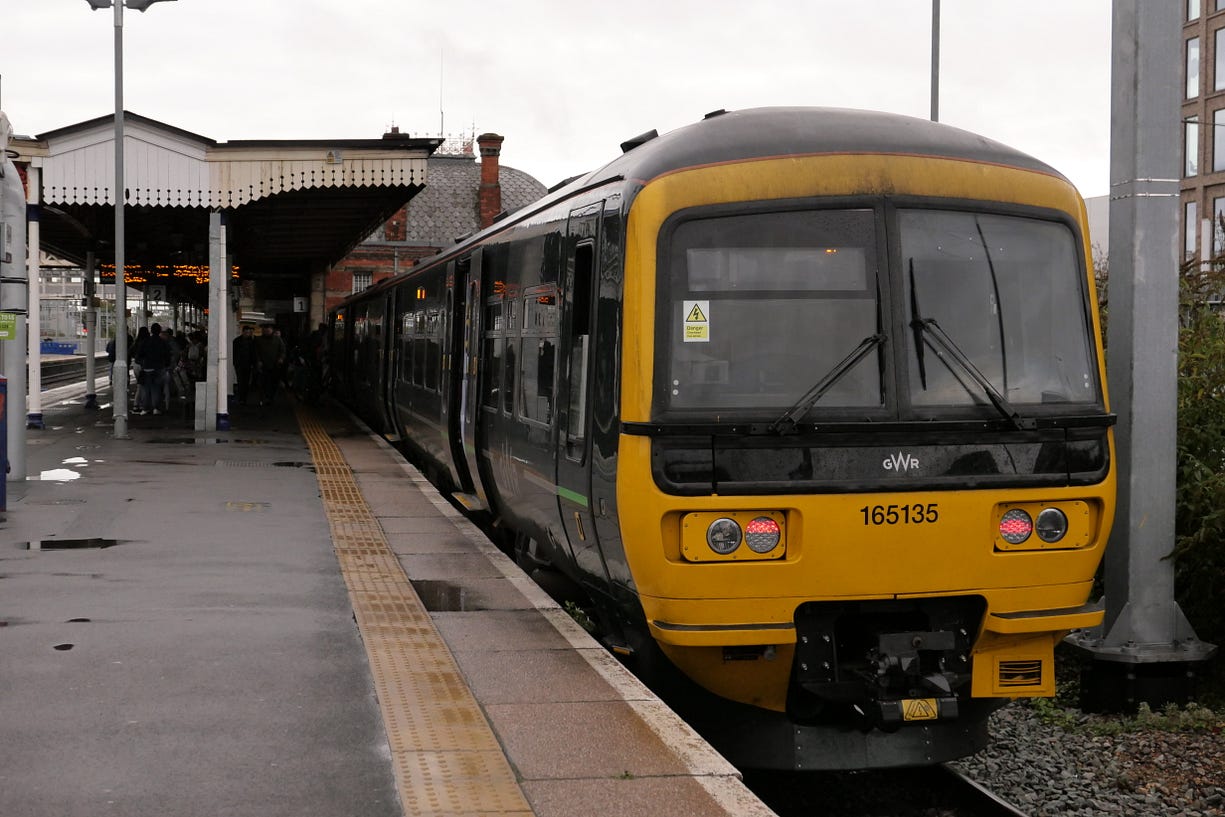
The interior looks quite cosy with the snug 3+2 seating configuration.
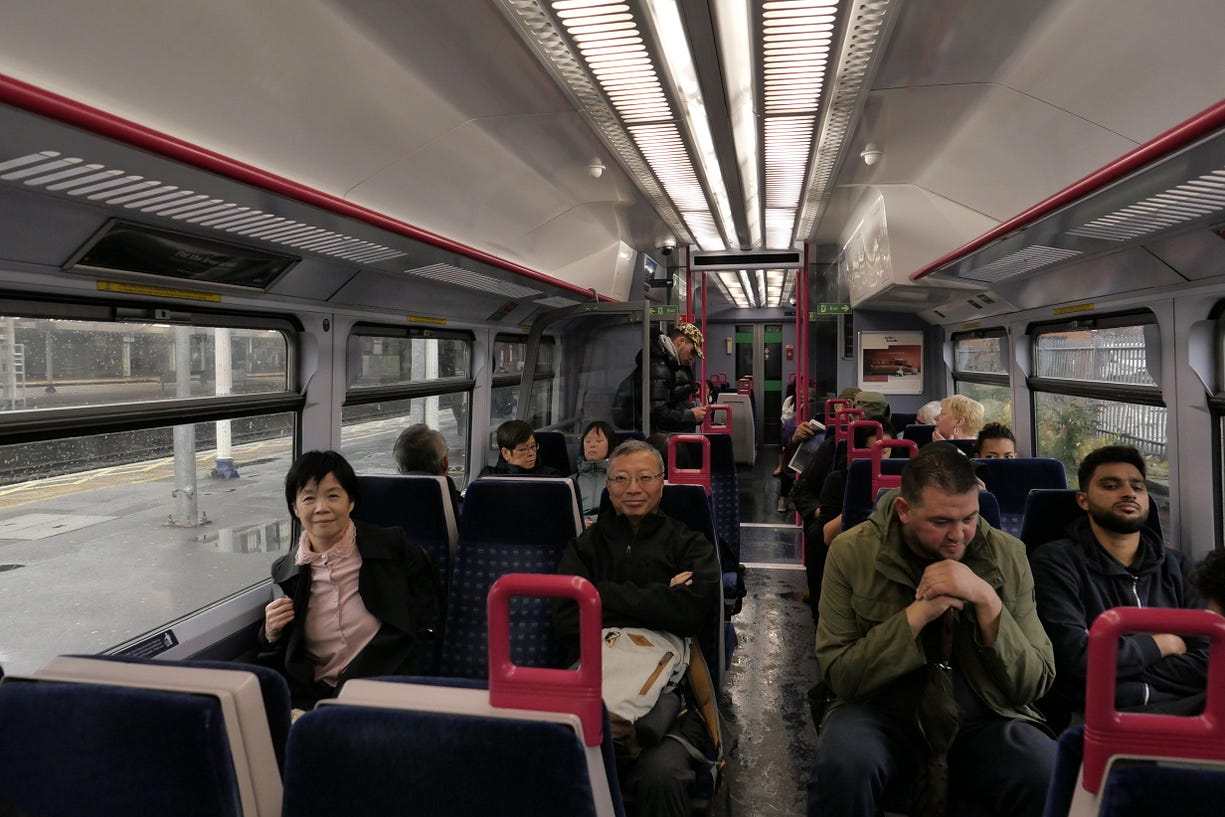
That evening we managed to return on a Class 387 Train. Very lucky to have tried 3 different trains on the same day!
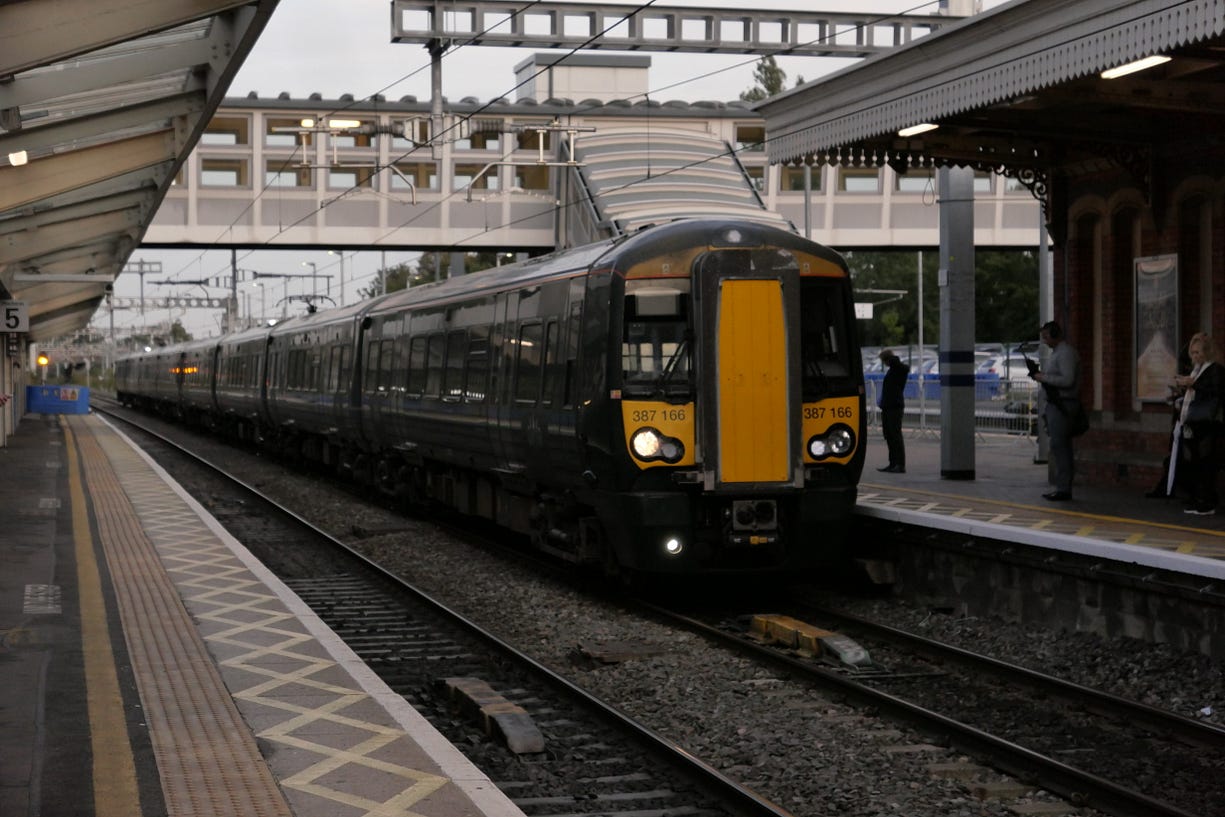
Oddly, the seats on one side of the corridor are in the opposite direction to those on the other side of the corridor. In contrast, on the Hitachi Class 800 train or trains of a similar class, the seats in one half of the carriage face towards those in the other half of the carriage.
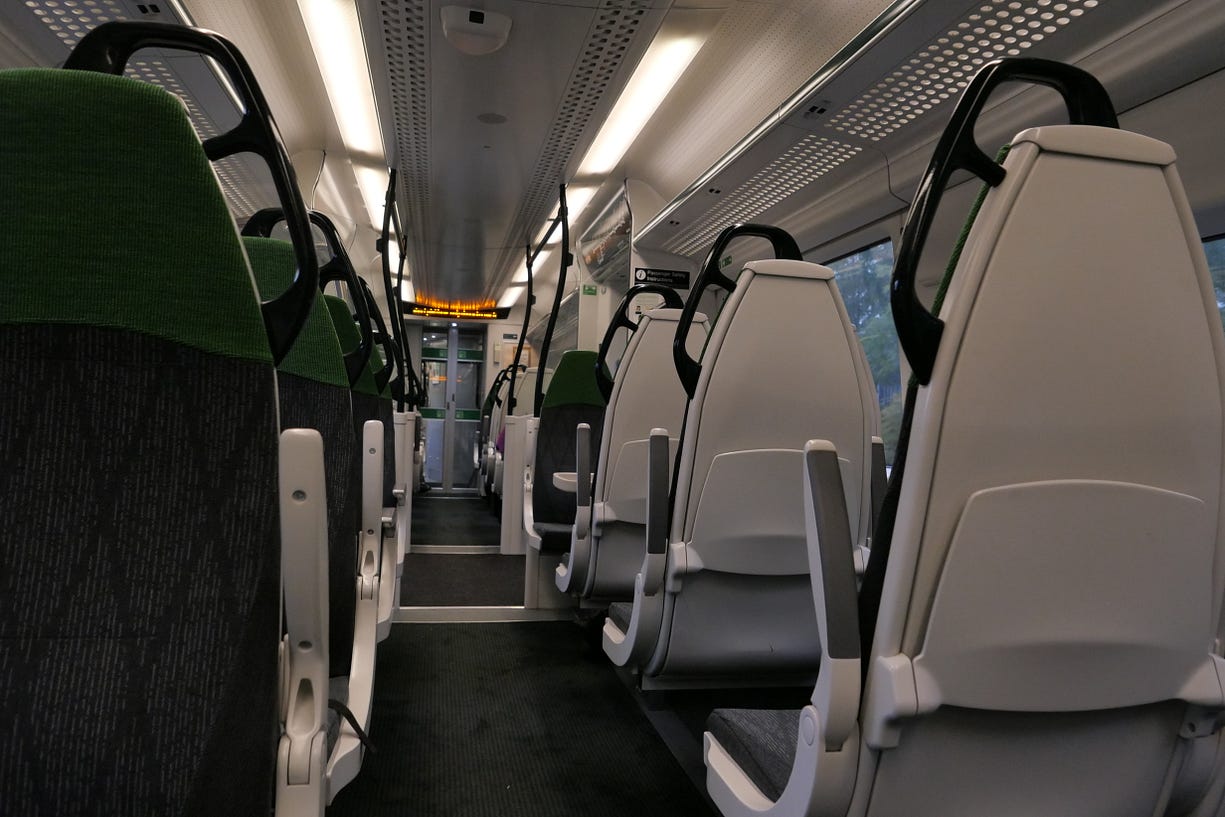
By the way, it felt kind of refreshing to see a national rail station with a name in a language other than English.
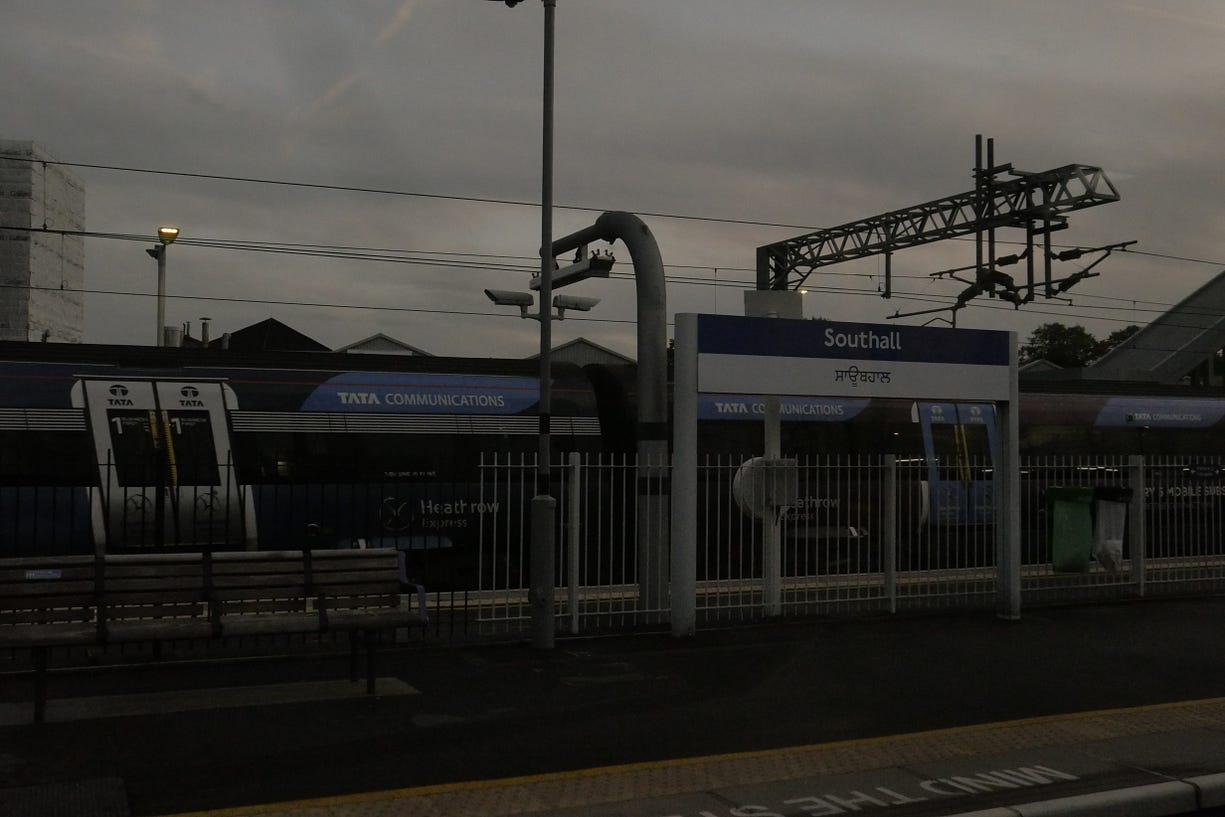
I didn’t get the chance to ride on TfL Rail (yet), but I did manage to get a shot of it as it was next to the GWR train we alighted.
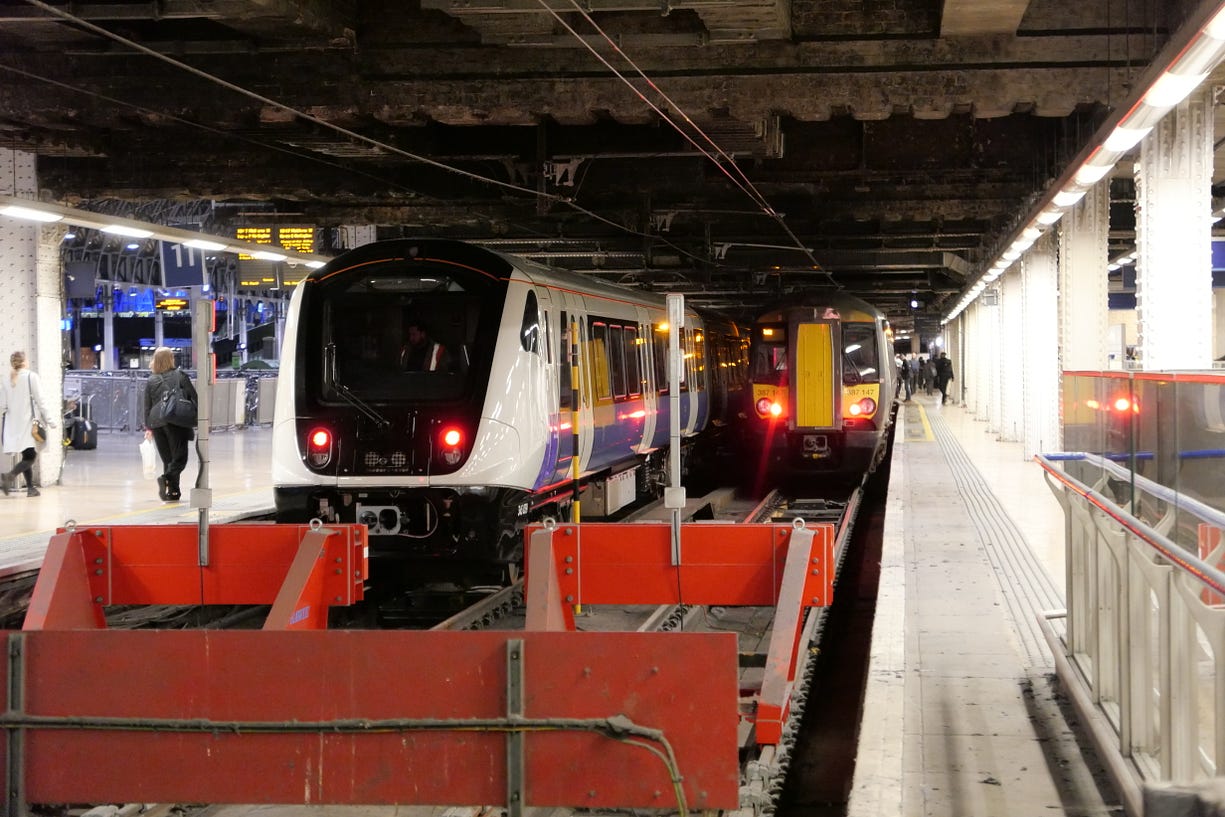
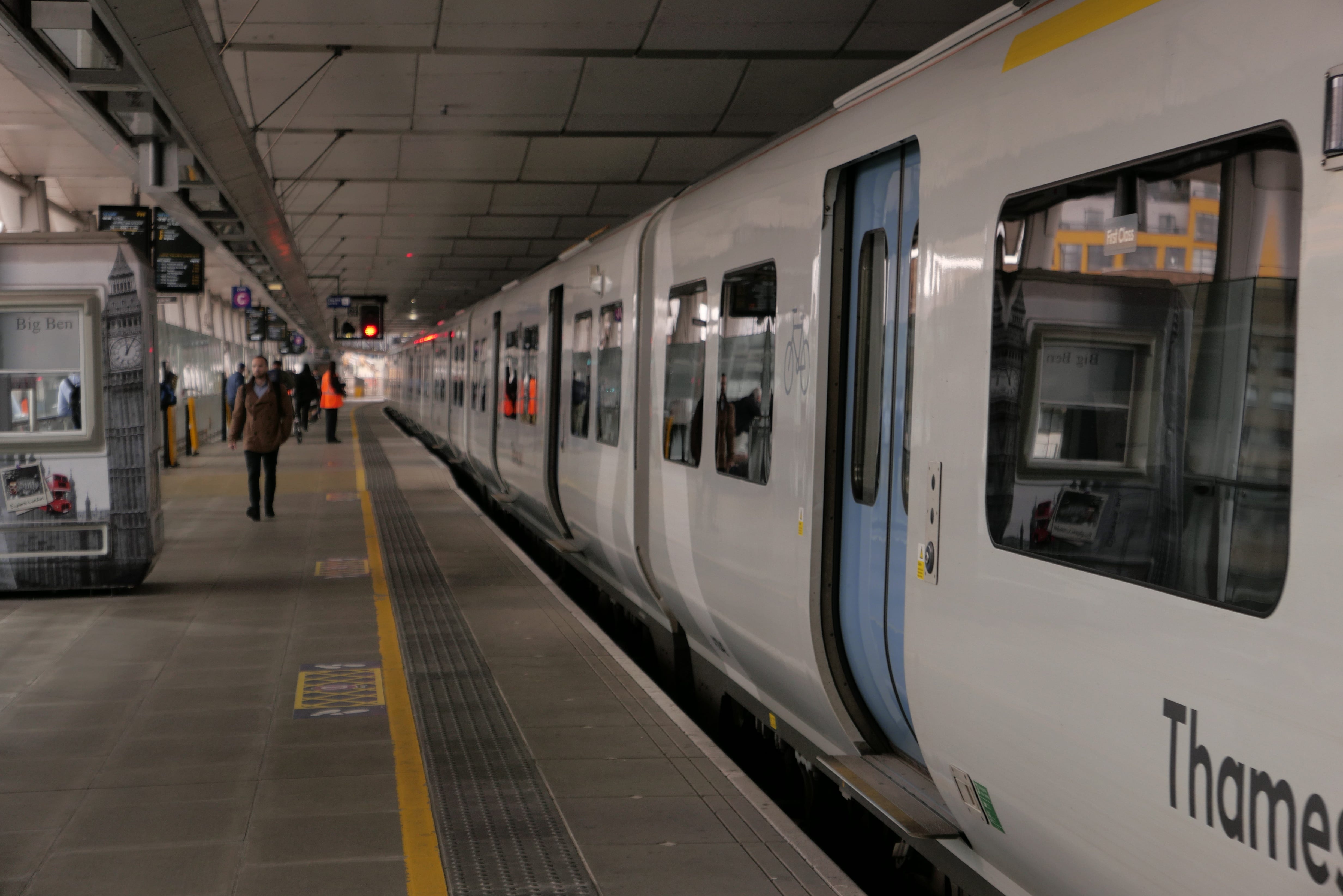
Thameslink
Thameslink is a north-south rail service that runs through central London, and is currently operated on these extremely new Bombardier Class 700 trains.
The following photo is taken at Blackfriars, a station that is built above and across the River Thames!
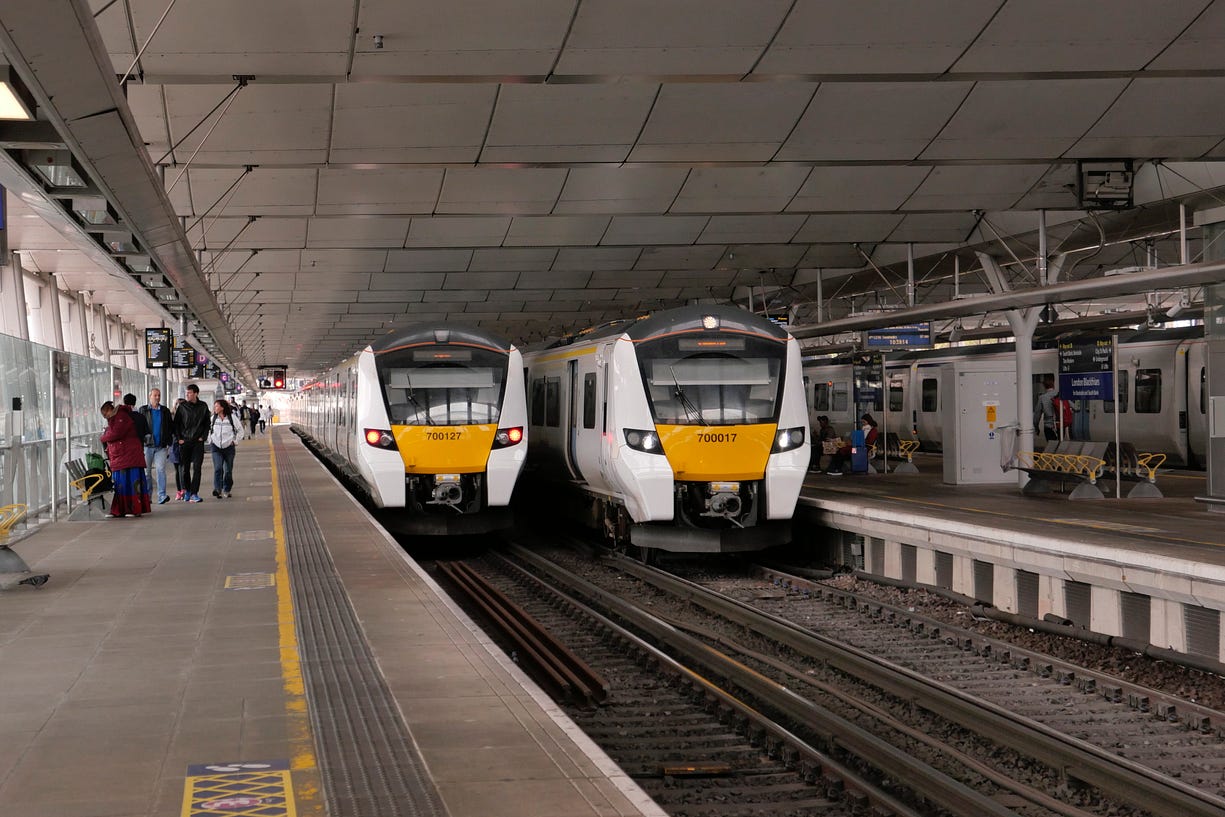
I saw a SouthEastern Class 377 Train on another platform. Coincidentally, I saw it again on my way back.
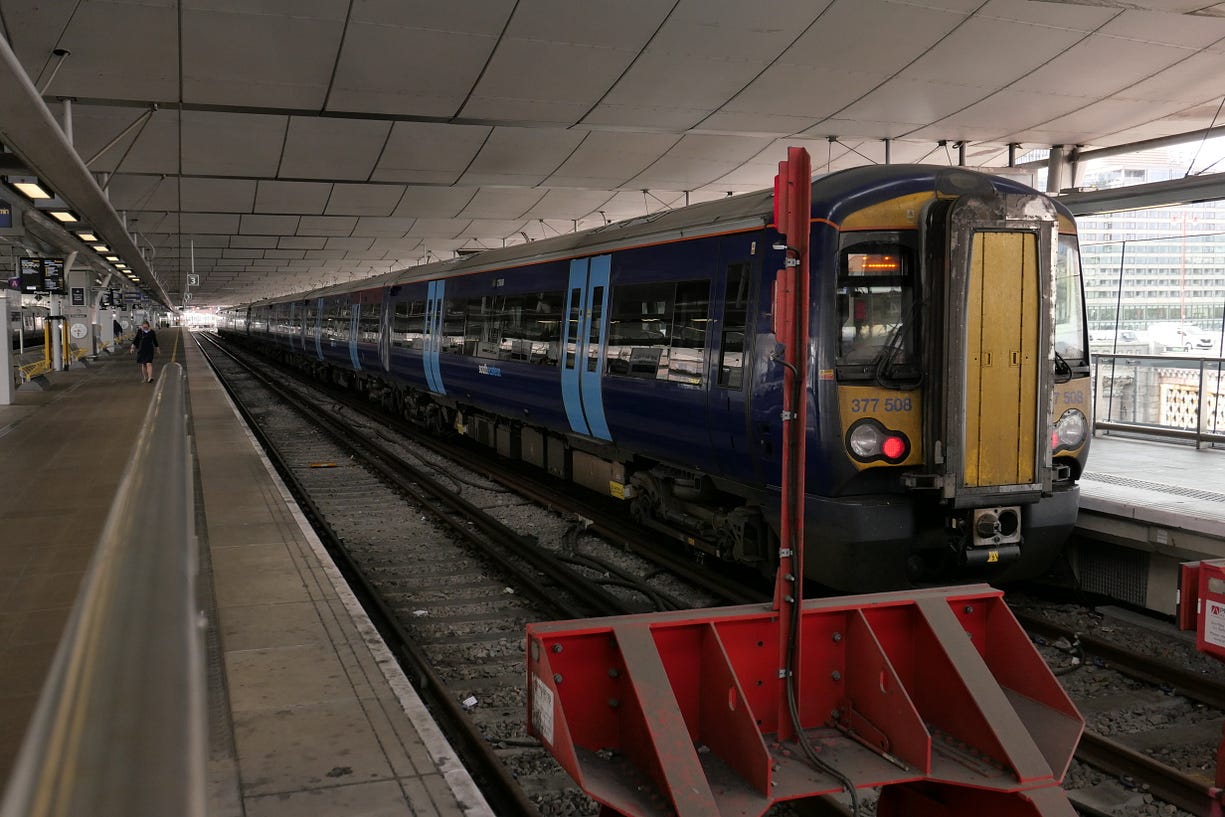
I think Thameslink is classified as national rail, but it appears to operate more like a metro service within Central London. The seating arrangement however immediately explains that it is more of a suburban service that happens to run through Central London.
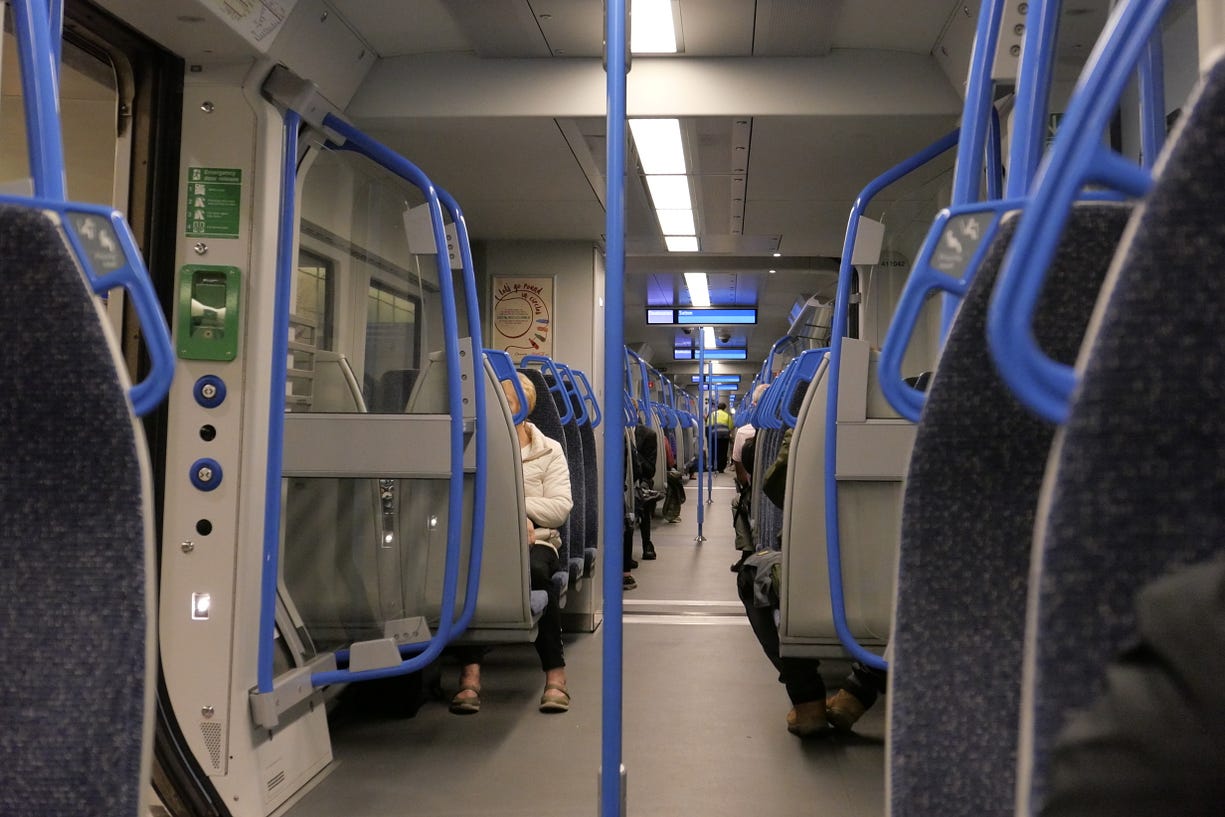
Made by Siemens, a company I think MTR isn’t very fond of at that moment……. not that it is anyhow relevant in this context.
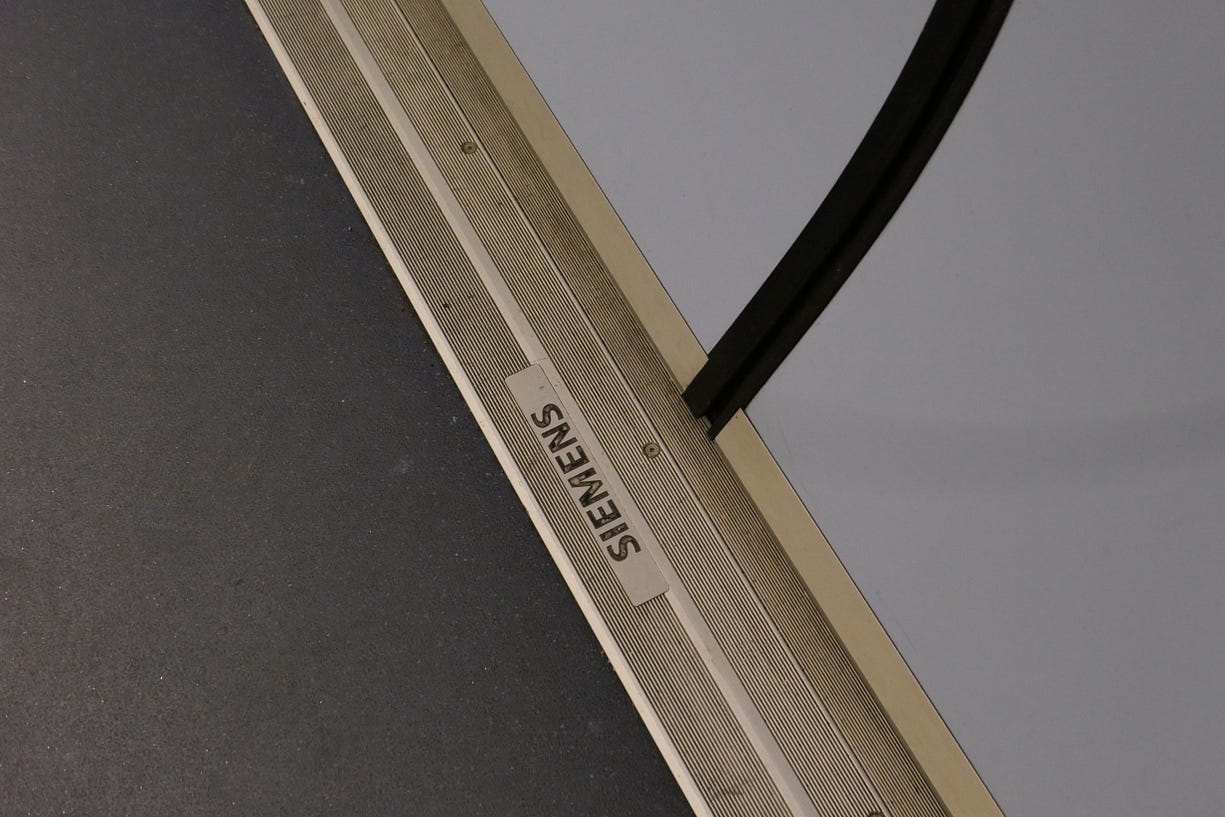
Not sure what this list of unheard European cities represent.
(Nope, they are not European cities. I did some research and found that they were some exotic destinations of the London Chatham and Dover Railway.)
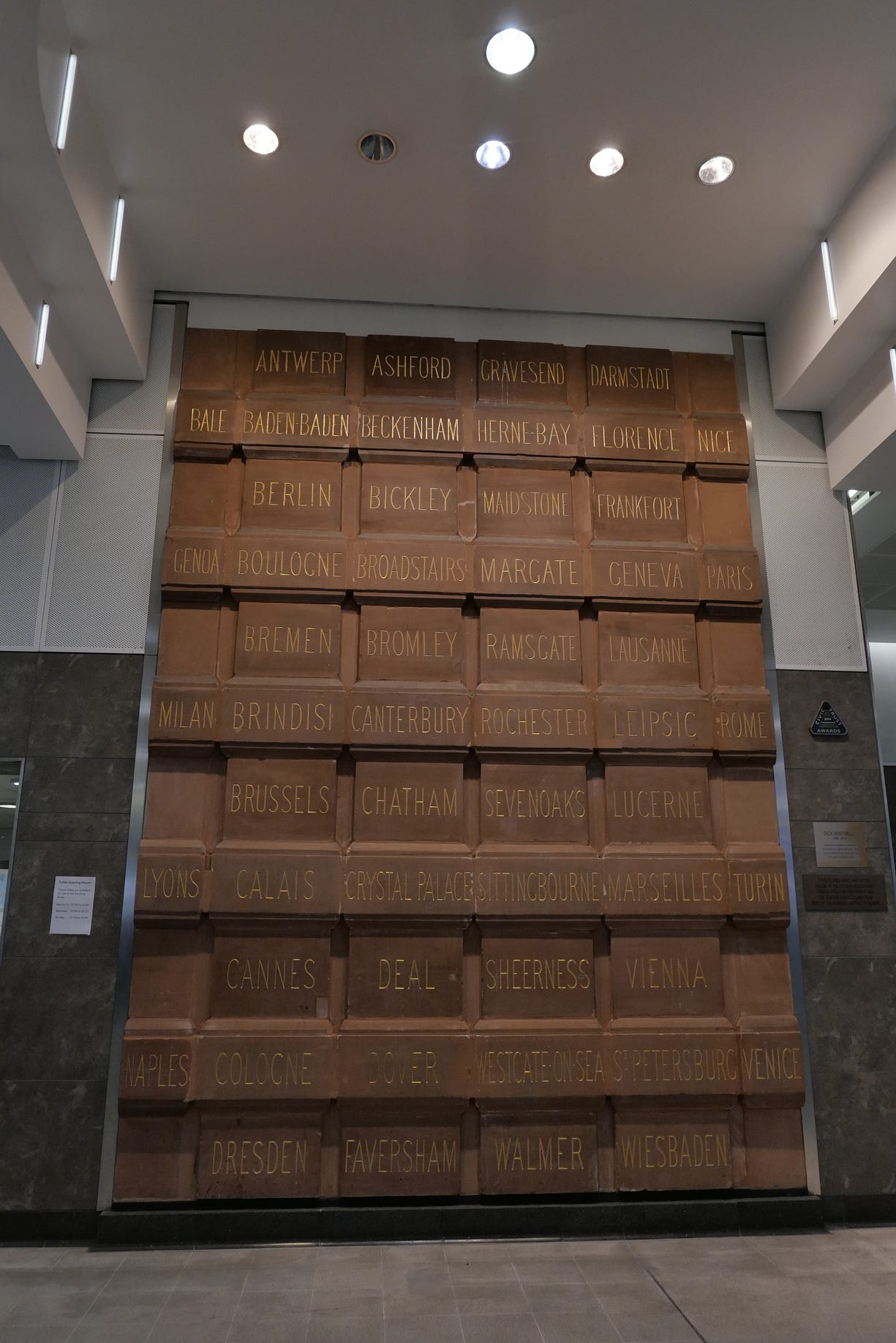
Although it is a “line”, it does have quite a few branches along the way, which makes for many different combination of services routing towards different branches. Plus there is a range of suburban, express, and semi-express services, making this even more complicated. An information display like this always helps.
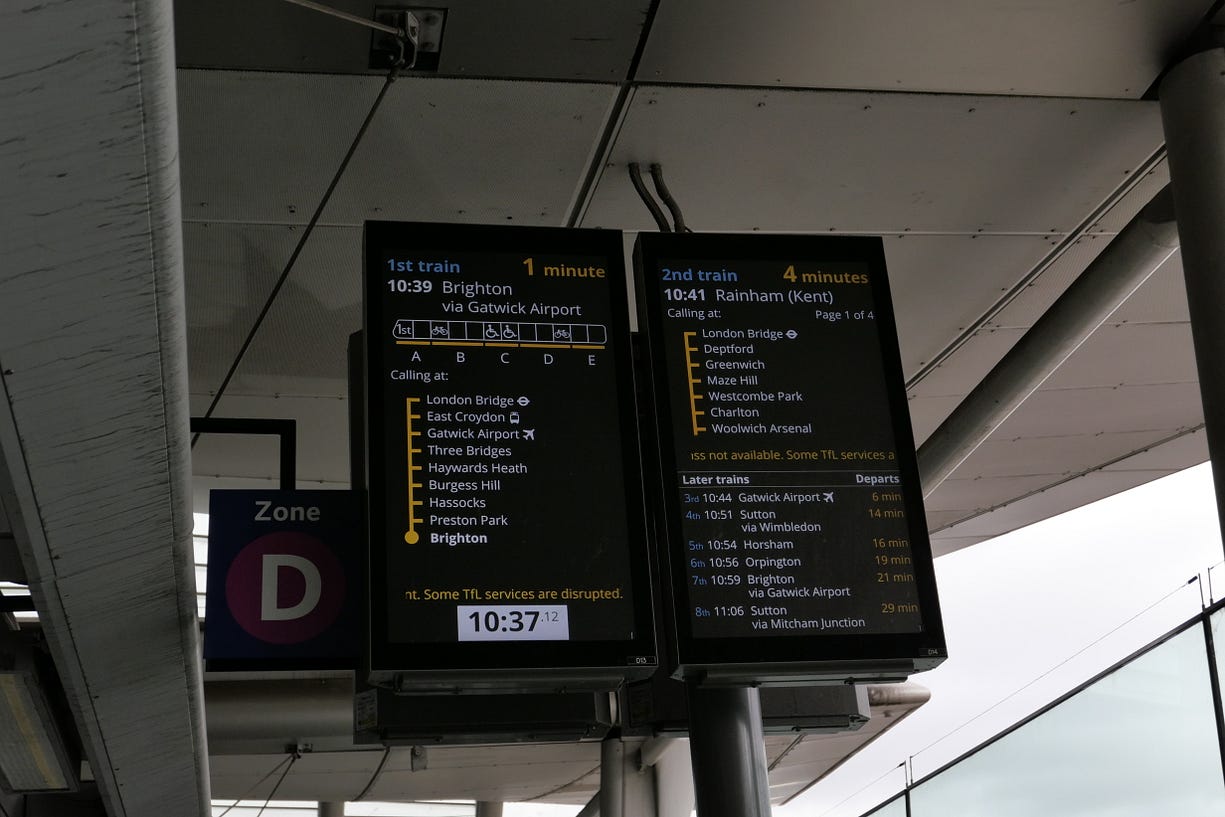
On the way back to Finchley we departed from London Bridge. I should say that all stations along the line (or at least in Central London) , including this one, are quite new.
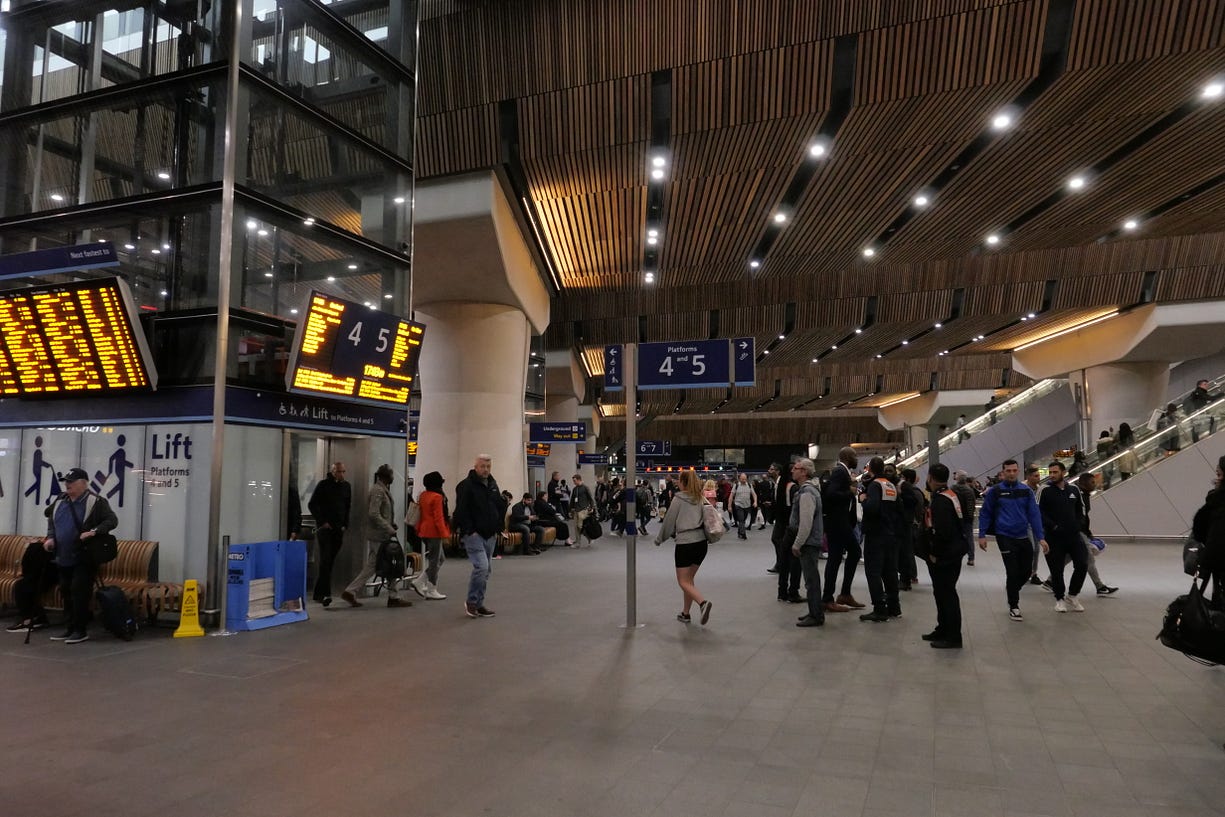
The ceiling pattern of the station is quite cool, though it serves no purpose to shed the tracks from rain. Quite pretty but not really pragmatic.
Edit: My condolences to the victims of the November London Bridge stabbing event.
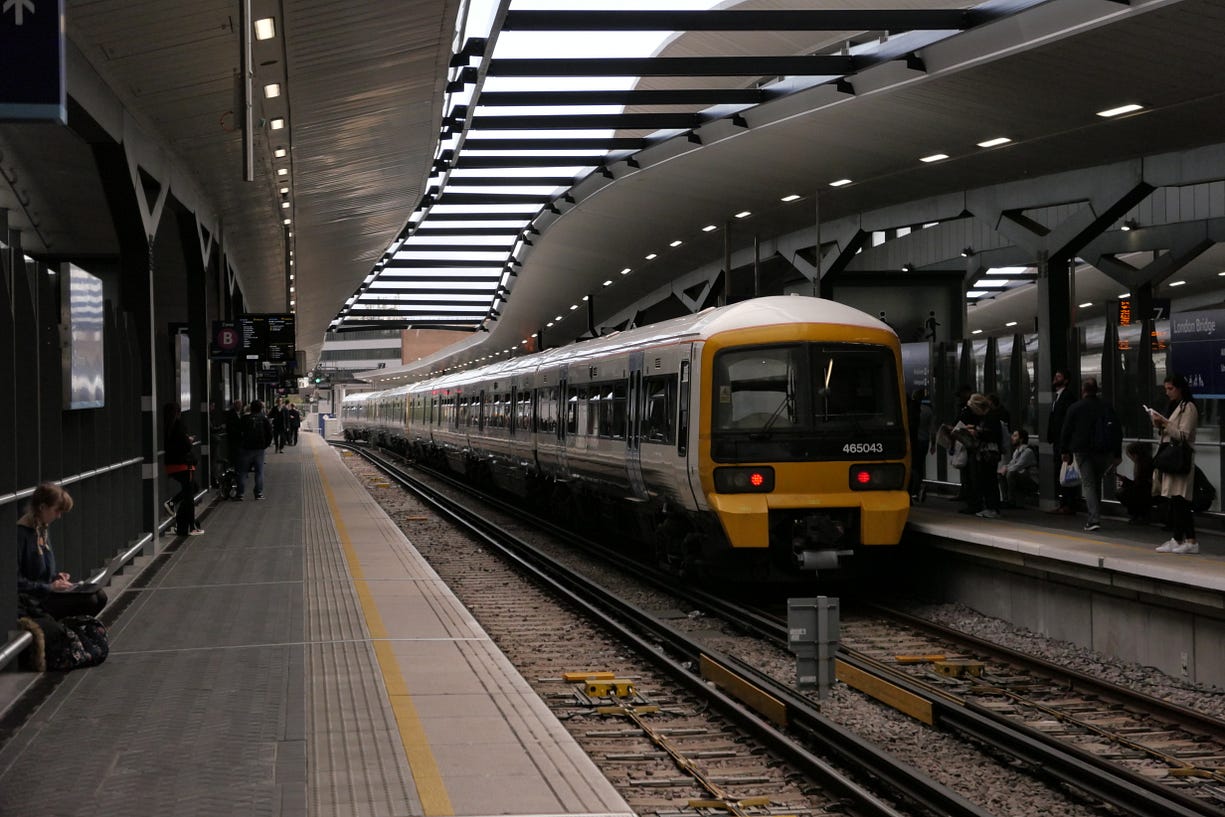
I managed to witness the pantograph of the train being retracted at Farringdon, which meant that the train switched from overhead AC to third-rail DC. I wish I took a video of this process though. Are the tunnels in Central London too small to accommodate overhead cables? It’s interesting to see a train that can be powered using different methods.
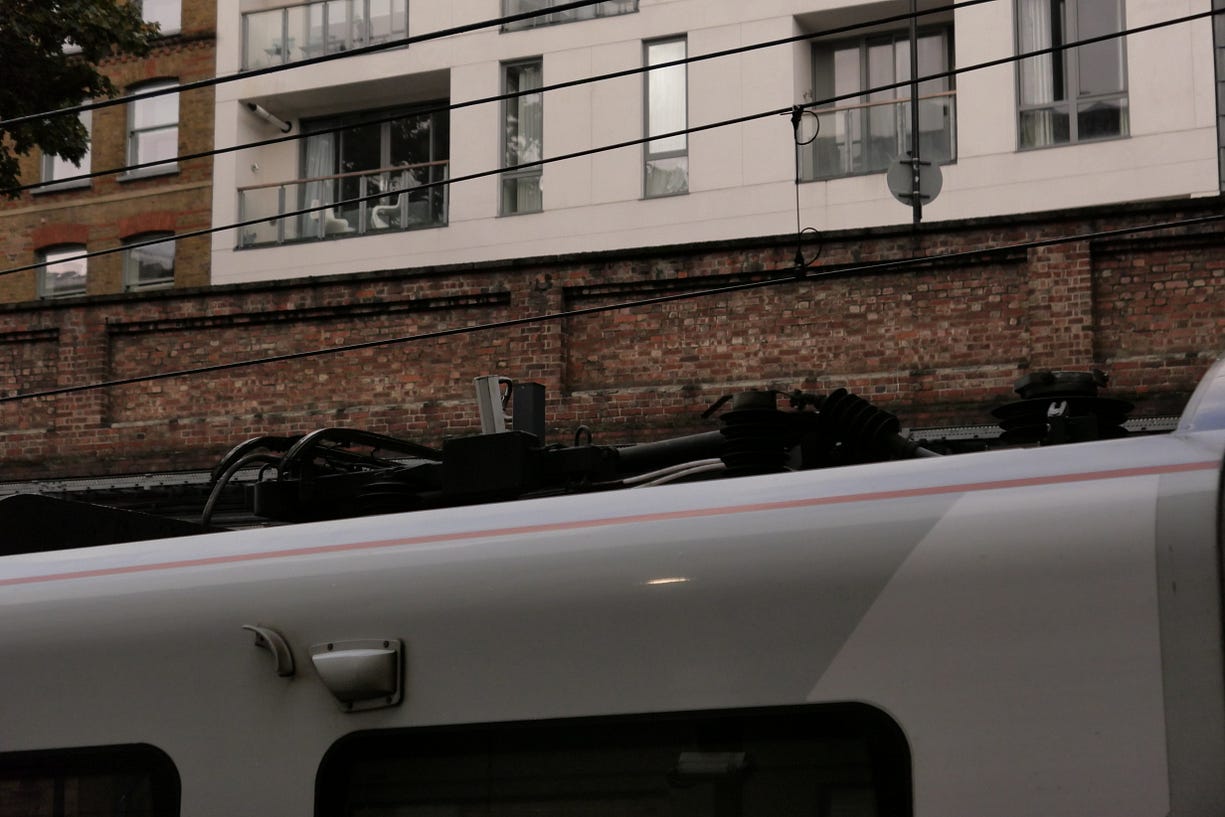
We returned to Kentish Town where we interchanged for the Northern Line. A somewhat odd thing was that there were no gates in between the tube and Thameslink. This is the kind of design that makes TfL fares so complicated, (and makes the system flooded with loopholes that are quickly discovered by rail enthusiasts :D)
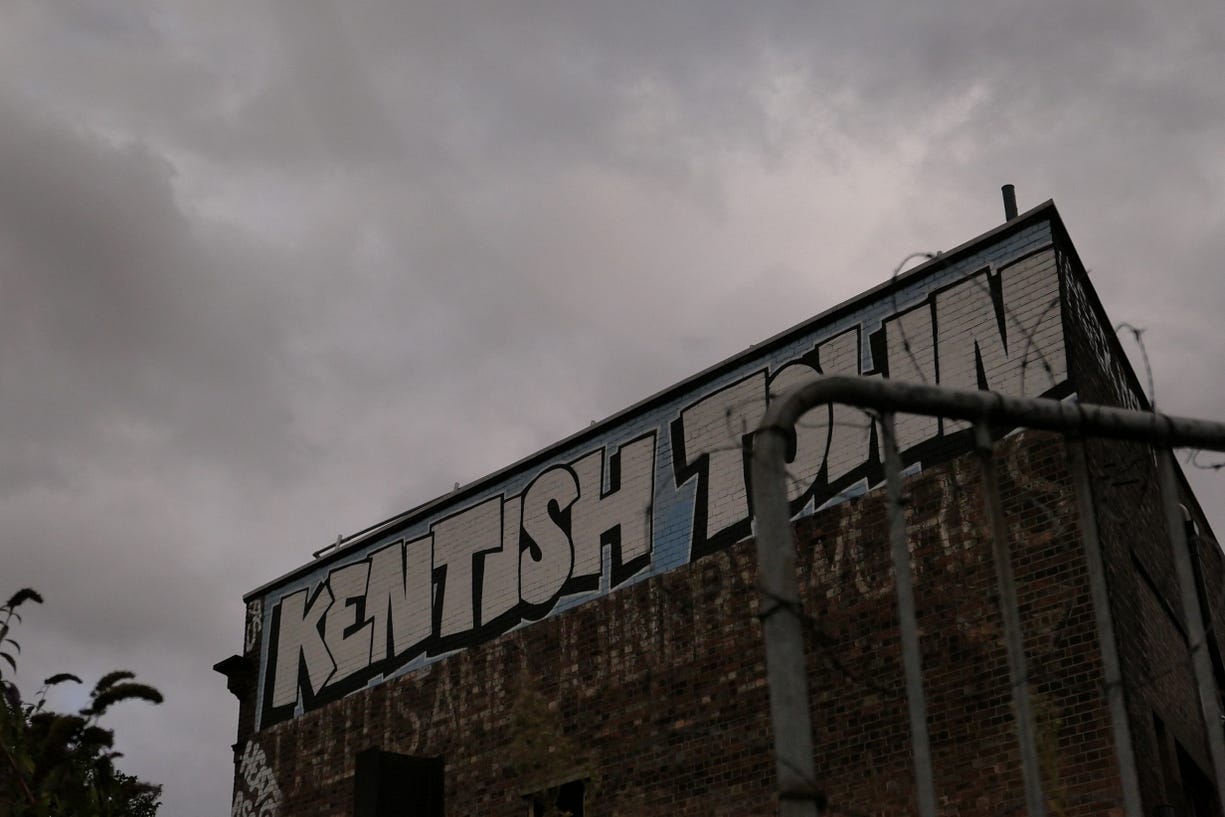
That’s it
That’s it for this article. These photos were actually all taken before October, but I’ve taken quite a while to compile the content of this article. In the past few months, I have done a train spotting trip in London and travelled to Wales for a volunteering activity at the Welsh Highlands Heritage Railways. I guess those photos are reserved for my next post!
Preview: London Overground, London Trams, TfL Rail, more National Rail services (c2c, Greater Anglia , Great Northern , Southern, Southeastern, Great Western Railway, Thameslink), Avanti West Coast (Not Virgin Trains anymore!), Transport for Wales, and more steam trains in Wales
Leave a Reply